THE MYTHS AROUND THE GOAN INQUISITION, CHARGES AGAINST ST. FRANCIS XAVIER, THE CURRENT HINDUTVA ATTACKS, RESPONSE TO ALLEGATIONS BY SHEFALI VAIDYA.

THE MYTHS AROUND THE GOAN INQUISITION: CHARGES AGAINST ST. FRANCIS XAVIER, THE CURRENT HINDUTVA ATTACKS, RESPONSE TO ALLEGATIONS BY SHEFALI VAIDYA.
PREFACE
This article is in response to the allegaions against St. Francis Xavier by Shefali Vaidya and the current Hindutva mentality agaisnt Christianity regarding the inquisition in Goa and the some misunderstandings that have grown over the years. It is not a political or secualr response but a Indian Goan Catholic Christian response. The church has acknowledged its dark past and have moved ahead and event he whole world has accepted it. Some fanatic people are trying to deepen the wounds which are in process of healing in the name of nationalism.
| CONTENTS
I. INTRODUCTION II. CHRIST, THE CHURCH IN EUROPE, THE MISSION WORK IN THE MIDDLE CENTURIES AND THE INQUISITION. 1. JESUS CHRIST AND HIS DIVINITY 2. THE CHURCH IN EUROPE 3. HISTORY OF THE MISSIONARY WORK UPTILL MEDIEVAL PERIOD 4. THE INQUISITION: ITS ORIGIN AND VARIOUS VERSIONS UPTIL ITS COMPLETE ABOLITION 4.1. The meaning of Inquisition 4.2. THE SPANISH INQUISITION 4.3. THE PORTUGUESE INQUISITION
5. THE GOAN INQUISITION: The Jesuits and St. Francis Xavier in Goa and the inquisition.
|
| III. THE MYTHS AROUND GOA INQUISITION AND MISSIONARY WORK
1. ST. FRANCIS XAVIER RESPONSIBLE FOR THE INQUISITION? III.1.1. Evaluating the letter. III.1.2. St. Francis Xavier: voice of the voiceless III.1.3. EVALUATING THE CHARGES III.1.4. MIRACLES III.1.5. REMARKS
2. THE INQUISITION WAS MEANT FOR WIPING OUT HINDU RELIGION AND MANY WERE BURNT AT STAKES AND EXECUTED…HOW TRUE IS IT?
3. There were forced conversions. Really? The Newly converts were forcefully converted and were returning to their old religion out of love for it…really?? Hindus were persecuted and temples were broken down. How true is it and Was it a regular event? III.3.1. No forced conversions as regular pattern III.3.2. Refutation of Dr. Antonio Noronhas Comment on churches built in 1560s III.3.3. The Portuguese care on Executions 4. REVERTING BACK TO OLD PRACTICES AND DESTRUCTION OF TEMPLES? THE ROOTS OF HINDUISM AND ITS BELIEFS. 5. THE MISSIONARIES TRIED TO DESTROY THE CULTURE. IS IT TRUE? DID THEY CREATE INTOLERANCE BY NEGATING IDOL WORSHIP? III.5.1. Inculturation: III.5.1.a. Fr. Thomas Stephens III.5.1.b. Robert De Nobili. III.5.2. Condemnation of idolatry.
IV. THE ORIGIN OF MYTHS AROUND THE GOA INQUISITION V. INTERPRETING CONTEXTAUL AND CIRCUMSTANTIAL HISTORY VI. THE CASTE SYSTEM, THE DESTRUCTION OF PRE EXISTING RELIGIONS BY ARYANS AND ITS EFFECTS TILL DATE VII. THE DIABOLICAL IDEOLOGY OF HINDUTVA AND THE SOUL SEARCHING BENEVOLENT PHILOSOPHY OF HINDUISM VIII. THE CHRISTIAN MISSIONARY WORK TODAY AND THE CHALLENGES AND MISCONCEPTIONS VIII.1. MISCONCEPTIONS OF THE MISSIONARY WORK VIII.1.1. A FOREIGN RELIGION? VIII.1.2. FORCED CONVERSIONS OR BY ALLUREMENT OR ENTICEMENT VIII.1.3. CONVERSIONS DESTROY CULTURE. PROMOTION OF INCULTURATION. |
| IX. RESPONSES TO SHEFALI VAIDYA
1. EVERYTHING WAS GOOD AND PEACEFUL UNTIL THE PORTUGUESE CAME. 2. ST. FRANCIS XAVIER WAS RESPONSIBLE FOR THE INQUISITION. 3. THERE WERE FORCED CONVERSIONS, OR CONVERSIONS OUT OF ALLUREMENT OR BRIBE AND NOT OUT OF CONVICTION. 4. THE HINDUS WERE FALLING BACK TOT HEIR OLD PRACTICES OUT OF LOVE FOR IT SINCE THEY STILL LOVED IT. 5. INQUISITION WAS A FORM OF CHRISTIAN RADICALISM 6. CHRISTIANITY DESTROYING CULTURE. 7. ONLY HINDUISM BELONGS TO INDIA. 8. THE POPE SHOULD APOLOGISE TO PEOPLE OF GOA AND INDIA. 9. THOSE GOANS AND INDIANS CONVERTED TO CHRISTIANITY SHOULD COME BACK TO HINDUISM. 10. WHY BRING UP THE PAST? X. SUGGESTIONS FOR SHEFALI X.1. CONVERSION STORIES. 1. A Sadhu Converted to Christianity-testimony 2. A Rishi converted to Christianity-testimony 3. A Hindu lady converted to Christianity -testimony 4. Hindu actress Mohini converted to Christianity -testimony 5. Conversion story testimony of Falguni Mehta, you can meet her at Divine retreat centre Chalakuddy Kerala. 6. Hindu Doctor convert to Chrsitianity…how? 7. Testimony of Hindu Pandit or Priest to Christianity, Divine retreat centre Chalakuddy Potta Kerala. 8. Muslim Imam discovers and accepts Christ, Divine retreat centre Kerala. 9. Testimony of the great Bollywood actor Johnny Lever 10. Harvard Jewish Professor sees Virgin Mary and converts X.2. SOME RELEVANT AND CURRENT MIRACLES EXCLUSIVELY LINKED TO CHRIST AND HIS CLAIMS A. Eucharistic miracles 1. General summary and history 2. At Lanciano 3. At Bolsena 4. Currently in Naju South Korea B. Stigmata. Difference between Hematidrosis and the Stigmata. 1. Doctors have claimed diagnose and cure for Hematidrosis whereas in case of stigmata there seems no cure. 2. stigmata is different 3. Stigmata of Padre Pio C. Other miracles and Miraculous events or objects. 1. Shroud of Turin 2. The apparitions of Virgin Mary i. At Guadalupe ii. At Lourdes iii. At Fatima iv. At Medjugorje 3. Statues or images of Jesus and Mary crying blood or oil 4. REMARKS XI. CONCLUSION
|
I. INTRODUCTION
After coming across a video on the talk by Shefali Vaidya on the Goan inquisition at Festival of Bharat and other videos on the same topic, it pushed me to bring to light many historical inaccuracies and misinterpretations spread by Shefali. I approached to her through her facebook account and saw the following of her fans of the same mind demanding answers on basis of evidence. After a careful research to the best extent I could I felt fitting to write it down as an article instead of some broken passages. This response is important for me as a Goan Catholic belonging to a backward class whose ancestors one day either chose or were made to choose Catholicism however it has not hindered my choice of remaining a Catholic being convinced of my faith without any pressure of fear nor of allurement or wealth as the most Right wing fundamentalists accuse the Christian missionaries of.
Given my background that I belong to one of the most original native Goan communities who has seen his grandparents and whose parents are still alive and are very much Catholic having great devotion to St. Francis Xavier like any Goan whether Christian or Hindu of Goa. Yet they have preserved their culture. Many allegations by Shefali Vaidya were convincingly result of misinterpretations of the evidences and in fact some were inaccurate given the historical evidences accusing the St. Francis Xavier and other missionaries of being violent and forcefully converting the natives of the place to Catholicism and even destroying the native culture. Where as the examination of the historical events and evidences show the opposite.
My attempt in this article is to respond to the allegations made by Shefali Vaidya against St. Francis Xavier, on the Missionaries of that time and of the present, the exaggerations and the Myths around the Goan Inquisition, the worst event in Goan History and the reason why many Catholics choose to still remain Catholics. I do not deny however that during inquisition and the Portuguese rule lot of evil happened however the exaggerations have made people hate Christianity and Christians. Therefore I am only addressing these issues and therefore it may look like I am avoiding the evil done by the Portuguese but it is not so. It may look so because of the focus of my topic. Before we begin let me state that “The authenticity and credibility of a religion does not depend on the population who follows it nor on the time of its origin nor does it get its legitimacy in a place of its origin nor on the way the followers follow it but it depends on the authenticity and credibility and its verification with specific signs by the use of most modern means of the Claim of the founder of the religion or the claims of the religion itself and the immediate desciples of the founder. The founder because he claims the authenticity of what he preaches and the immediate desciples because they are the first recepients and the best interpreters or the most reliable interpreters of the message of the founder.”
II. CHRIST, THE CHURCH IN EUROPE, THE MISSION WORK IN THE MIDDLE CENTURIES AND THE INQUISITION.
As my purpose of this article is to respond to the allegations of Shefali Vaidya on the Goan inquisition I have not attempted to give detailed background of Church history in Europe and the Inquisition but in order to understand the mentality with which the inquisition began we have to have some brief idea.
- JESUS CHRIST AND HIS DIVINITY:
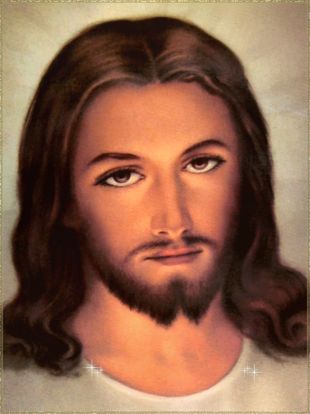
Jesus Christ the most important figure in human history because of whom the whole historical context changed had claimed himself to be the Son of God which led to his death by crucifixion. The one who worked so many miracles to prove his divinity had kept the greatest of all the signs to put the seal on his claims: THE RESURRECTION. The Resurrection event was and is the undeniable reality of Christian Faith which is also proven on basis of rational argumetns; the empty tomb, the appearances and the witness by the Apostles[1]. The apostles whom he had chosen, after witnessing the event and having received the Holy Spirit being obedient to their Lords command to proclaim the Gospel to all nations baptising those who believe[2] had spread far and wide. Firmly believed and proved on basis of enough evidences, the Apostle Thomas reached India to spread the Good News in the first century itself. Thus the very purpose of the existence of the Church is to give witness to Christ and draw people to Him. As Christ himself said “no one comes to the Father unless through me[3]” and also “teach my precepts to all nations baptising them in the name of the Father, the Son and the Holy Spirit.”[4] To sum up we can categorise the evidences for the divinity of Christ in three categories 1. The historicity and its verifiability of the prophecies of the coming of the Messiah, 2. The Historicity and the verifiability of the existence of Jesus Christ, the linking of Messianinc Prophecies to Jesus Christ and hIs Miracles particularly the RESURRECTION, and 3. The relevant and current miracles exclusively linked to Jesus Christ and his claims.[5]
- THE CHURCH IN EUROPE
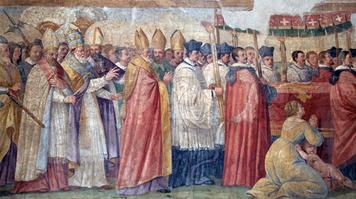
The Church faced persecutions from all sides in the first three centuries until the Roman Emperor Cosntantine gave it freedom after winning a war he most desired as a result of a vision of the Lord. The Church had never picked up weapons to defend itself from the persecutors. But the weapons were used to rage Crusades in the 11th Centuries. The Church was serious about the doctrines and the dogmas of faith. Having found favour in the eyes of almost whole Roman empire which had now fallen and become various kingdoms, it was its duty to unite them under one faith. There fore the strictness of rule was important. The church was now just not a spiritual institution but also a political power. Given this background we should know that Church and State were the same. The Church’s political authority gave it the right to prosecute offenders especially those of the faith. As Christianity was the only religion that was followed, anything that was different from the Christian doctrine was seen as heresy and as treason against the Pope. The only religions they knew were Judaism and Islam and the religions of the Romans and Greeks which were extinct. The Church was One until 1054 when the first schism took place between the western church in Europe keeping Rome as its headquarters and Bishop of Rome as its Patriarch and the Eastern Church its headquarters being Constantinople present day Istanbul in Turkey with many patriarchates of the Eastern Patriarchates Churches. The Third Lateran Council in 1179 had resolved not to cause any more schisms in the Church because Christ wanted all his followers to be united as one flock. It was with this purpose the Pope wanted all heresies to be suppressed.
- HISTORY OF THE MISSIONARY WORK UPTILL MEDIEVAL PERIOD
One day St. Francis of Assisi (1181-1226), who was once a son of a rich noble in Italy, had experienced Christ on the way to a crusade to gain fame and name. when he came back he gave up all his riches to his fathers disappointment and became a wandering preacher who would beg not for himself but for the poor. He founded the Franciscan order in order to preach the Gospel and help the poor. One day he took one of his friars to preach the Gospel, on the way he begged for food and distributed it among the poor and came back. The Friar asked him “are we not going to preach to them?”and he answered “we have already preached the Gospel to them.”
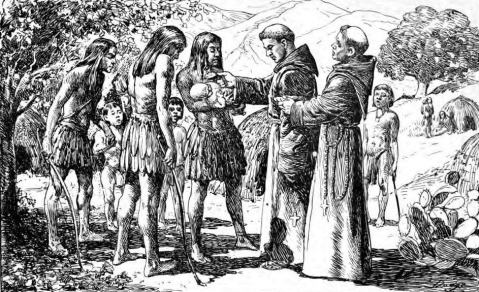
Some people tend to link the missionary work of the Church by missionaries only to the middle ages. However the mission of spreading the Gospel was commanded by Christ himself. “Therefore go and make disciples of all nations, baptizing them in the name of the Father and of the Son and of the Holy Spirit, and teaching them to obey everything I have commanded you. And surely I am with you always, to the very end of the age.”[6] And” and also “Go into all the world and preach the gospel to all creation. 16 Whoever believes and is baptized will be saved, but whoever does not believe will be condemned” [7] Therefore the apostles and their successors had dedicated their life in proclaiming that “Jesus Christ the Son of God had become man and died for our redemption and on the third day rose from the dead”[8] and that “there is no other name in the heaven or on earth or under the Earth other than the name of Jesus by which we are saved.” The strict monotheism and condemnation of idol worship and other forms of polytheism are condemned throughout the Bible. The teachings of Christ focused on the works of charity and the grace given by God as means of salvation and not the human rituals. As I said earlier the divinity of Christ is established on the basis of the historicity of the Prophecies of his coming, the historicity of His existence and His Resurrection and the relevant miracles exclusively linked to Christ and His claims. The spiritual experiences of the mystics and the miracles that happened in their life made their faith more and more firm and obliged them to respond to Christs calling to go through out the world and proclaim the good News. Therefore missionary work has been in existence from the very day of the existence of Christianity. As Christianity received the status of being the State religion the leaders made sure that the missionaries and preachers were well supported in this Holy duty. As Many heresies were growing right from the early years. THE EARLY Church Fathers had acclaimed “extra ecclesia nulla salus” outside the Church there is no salvation. We must know one thing that prior to 1054 AD the Church was one and this acclamation was used to for those who had left the Church and were supporting deviant teachings, However by the middle ages almost everyone in the Church used it for those who were not even Baptised and hence not part of the church, the people of other religions. The Schisms of the Eastern church in 1054 and the The Protestant reformation in 1517 which caused the schism in the Western Church had forced another Church council who made this acclamation a part of the doctrine. Though this acclamation “no salvation outside the Church” was mostly referred to those who were Baptised and had left the Church it was taken as a common notion that by the very virtue of someone being Baptised and is part of the church he would be necessarily saved and someone not Baptised and not part of the church would necessarily be condemned irrespective of them doing good or evil deeds since Christ commissioned the Church to Evangelise all people[9] in order that they may be saved and redeemed from Sin and slavery to Sin and be saved from eternal condemnation: “those who are baptised will be saved and those who are not baptised will be condemned.” It was with this background and mindset the missionaries in the middle ages carried out the missionary expeditions. The Church always held that its mission is threefold: 1. It worships the true and living God ( though the celebration of the Eucharist , sacraments and other liturgies) 2. It evangelises (by proclaiming the Gospel of Jesus Christ through deeds and words) and 3. It serves the poor and the needy. No one of this three tier mission of the Church can be separated from each other. That is why wherever the missionaries went they took food, clothes and other materials for the people to whom they preached[10]. After the Council of Trent in 1545 to 1563 had affirmed the Catholic beliefs and the canon of the Bible as it was held before and now challenged by Protestants, it also affirmed once again that there is no salvation outside the Church. After the Ottoman Turks had blocked the swiss canal which was the way for the Europeans to trade with the East particularly India, Portugal and Spain were the countries who had taken keen interest in discovering new Sea Routes to India. We must remember that the State and the Church worked together. Therefore as these two nations embarked on the journey to discover new sea routes to India, the Church asked the Kings and Queens to allow the missionaries to journey with them. We must know that missionary work was purely taken care of by the Church till then, the state only helped the missionaries to travel and supplied with food products for themselves and for the people they would tend to. As Vasco Da Gama of Portugal discovered the new sea route to India and Christopher Columbus of Spain discovered America, there was a need to systematically distribute the missionary work. Thus Pope Alexander VI divided the western world to Spain and East to the Portuguese in 1494 and gave Portugal and Spain a special patronage to take care of missions in the newly discovered areas and to propose names for Bishops in these areas and the Church would approve it. This special patronage was called the Padroado.[11] In the year 1622 Pope Gregory XV established the Propaganda Fide (Congregation for the Propagation of Faith). Now many people have raised questions about the missionary work of the Church some even saying the verses of the great commission to preach the Gospel are alter editions like Arun Shourie. I have dealt with these topics in the later section of this article.
- THE INQUISITION: ITS ORIGIN AND VARIOUS VERSIONS UPTIL ITS COMPLETE ABOLITION
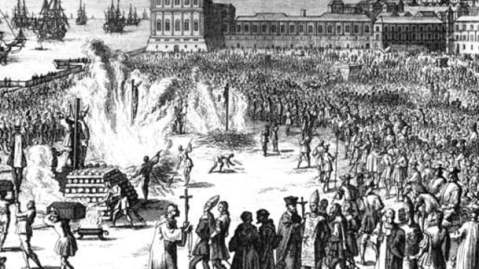
4.1. The meaning of Inquisition
As I said earlier the Church in Europe was not only a spiritual institution having spiritual authority but it also had political authority. The word inquisition is derived from the Latin “inquisitio”, which referred to any court process that was based on Roman law, which had gradually come back into usage in the late medieval period. Thus it was a method of enquiery and trial used by Romans which was adopted by the Church in Europe against the heretics. Before we proceed with the Institutions of the Inquisition we need ot understand what a Papal Bull is: A papal bull is a pope’s official, formal decree establishing a religious order, clarifying a doctrine, ratifying other documents, founding a university, convoking a general council, declaring a jubilee or making a similar statement. The term bull refers to the lead seal, bulla, that was attached to the document to authenticate it. The seal depicts the apostles St. Peter and St. Paul with the name of the pope signing it, emphasizing the authority of the pontiff. Popes sign these documents as episcopus servus servorum Dei (“Bishop, Servant of the Servants of God”).[12]
Pope Lucius III was the first Pope who established the first Inquisition as an institution to examine the Heretics like the Waldensians and the Carthars. He promulgated the inquisition through his Bull Ad Abolendam in the year 1184. However, according to this Bull the duty of the Clergy was only to examine the heretics and bring them to the civil executors to be given the deserved punishment. Violence and torture in this period was hardly used and to most extent not used at all. The only punishment they got was deprivation of certain rights and imprisonment. The priests and Bishops who supported heresies were deprived of their ecclesiastical office. Over the years the political powers of the Church had grown especially after crowning King Charles as he was called Charlemagne. The inquisition began by Pope Lucius III had failed to stop the eruption of heresies and some viewed it as too soft upon the heretics as they did not care for the consequences. Under lot of pressure from the ecclesiastical leaders and the growing tensions between Ferdinand II and the rise of more heresies, Pope Gregory IX had introduced Institution of the Inquisition as an ecclesiastical congregation which was meant to execute the heretics[13]. However the execution and trial would be done by civil rulers. The sole purpose of the inquisition was to deal with the heretics who were still on the rise and since the admittance of heresies from their mouths Pope Innocent IV introduced torture in the inquisition through the Bull Ad Extirpanda on 15 May 1252 following the murder of St Peter of Verona by the Cathars. However, torture was just a last resort and it was certainly not meant to put someone to death. The following parameters were placed on the use of torture:
- that it did not cause loss of life or limb (citra membri diminutionem et mortis periculum)
- that it was used only once
- that the Inquisitor deemed the evidence against the accused to be virtually certain.
The bull conceded to the State a portion of the property to be confiscated from convicted heretics. The State in return assumed the burden of carrying out the penalty. The relevant portion of the bull read: “When those adjudged guilty of heresy have been given up to the civil power by the bishop or his representative, or the Inquisition, the podestà or chief magistrate of the city shall take them at once, and shall, within five days at the most, execute the laws made against them.”[14] Thus only the head of state had the duty to execute the heretics after following the rigorous procedures.
4.2. THE SPANISH INQUISITION
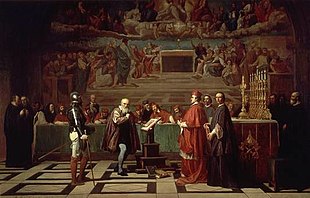
Many of the Newly converted Jews and Muslims were attempting to relate with their relatives. Some in order to avoid the persecution from their families for choosing to be Christians were trying to go back to praying in their own way and at the same time remain Christians, while other being to zealous of the new faith and dedicated to missionary work would wrongly interpret certain doctrines which was termed as heresies. While others were almost on the verge of leaving Christianity and join back to their families. Such news was communicate by the King Ferdinand to Pope Sixtus IV[15] and asking him to allow torture in the inquisition. As Spain had discovered the Americas the Indigenous converts had the tendencies to fall back to their Old practices considered superstitious by the Church or fall into something called religious syncretism where both the native religion and the Christian faith were practiced as one and the equal religions together. Therefore to avoid such polluting methods and thinking the Pope allowed torture and execution by death but only as a last resort. However the Pope himself had complained about the way the inquisition was carried out.
4.3. THE PORTUGUESE INQUISITION
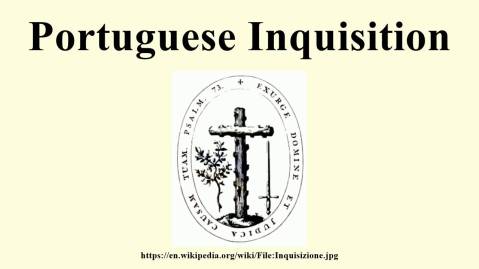
When Spain instituted the Inquisition in 1478, many Spanish Jews fled to neighboring Portugal and joined older Jewish communities there. Soon, Jews made up around 25 percent of Portugal’s total population. They were astronomers, scientists, and rabbis who were critical to advancing Portuguese exploration during its legendary Age of Discovery.
But it wasn’t long before the Jews, who had been publicly blamed for droughts, famines, and the plague, were given their death sentence in Portugal. In 1536, three months after angry mobs burned Jews at the stake, Portugal established its own Inquisition, with the stated aim of battling “heresy.” Jews were forced to formally vow allegiance to the church, but they practiced their faith in secret. They became known as the “New Christians,” conversos, or crypto-Jews.
As it was in Spain it had to be headed by the chief Inquisitor and execution could be done only by the state. It was established in Portugal in 1536 under the Bull by Pope Paul III.
- THE GOAN INQUISITION: The Jesuits and St. Francis Xavier in Goa and the inquisition.
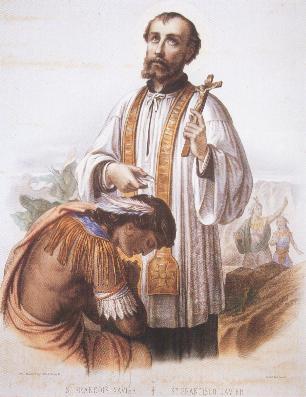
As I said earlier that the missionary work was carried out immensely in order to save souls from eternal damnation as Christ alone is saviour. It was done from the very beginning of the advent of Christianity. Baptising someone was taught to be an act of charity and denouncing idol worship was equal to denouncing Satan. Sometimes the approach to Baptise someone was seen like the action of a mother or father who for the sake of the good of the Child makes the child do something even if the child does not want to do it. The Protestant Reformation in 1517 had raised the questions about the validity of the Church. It was for this purpose the Society of Jesus was found to study and combat these challenges. Ignatius of Loyola animated the conversion of Francis Xavier who had a worldly approach to life. He had turned his heart so much to Christ that he gave up all his ambitions and dedicated his life to the missions.[16] He landed in Goa in 1542 and travelled far and wide proclaiming the good news of the Lord he had experienced. When he landed in Goa he realised that there was a reasonable number of Catholics in Goa. Although there are historical evidences that Christianity existed in Goa even much before the coming of the Portuguese,[17] it went on rise with the Portuguese entering India and the missionary works done here. As recorded the so called “Hindu” natives of Goa had some problems with the Adil Shah rule. They approached Timoja of Honavar for help to fight against them. However, knowing that he had a small army compared to that of the Adil Shah, Timoja advised them to approach Afonso de Albuquerque for help which they did. In return Afonso asked them to convert to Christianity. At the end Timoja and his family converted to Christianity. Afonso de Albuquerque had entered Goa in 1510. Francis Xavier spent much of his time in catechising the newly converts. He had realised that they were not instructed properly and hence were inclined to lean back to their old religious practices. He therefore suggested that the King John III of Portugal should institute the Inquisition in Goa[18]. St. Francis Xavier spent much time in Catechising the New Converts and Preaching to those who were not yet Christians. He died on the Sanccian Islands on the way to China. While he was buried with lime in his grave to fasten the decaying process. Yet his body was preserved or rather remained incorrupt. The Inquisition was imposed in Goa in 1560, 8 years after St Xavier’s death. The inquisition was meant for those newly converted Christians who were falling back to their old religious practices. The inquisition was not certainly meant for those who had not converted to Christianity. It is alleged that during this inquisition around 16000 people were executed however there are no records possibly because the Office of the Inquisition was abolished completely in 1820. Whatever the records remain we know that around 57 were executed and 67 were burnt as effigies (after their death). Sometimes the Hindu practices were on scanner and the Local Hindus were not allowed to freely practice their religious ceremonies and even if they practiced they had to follow certain guidelines and rules in order to avoid Christians being present with them. But the inquisition had its stages of forced infirmities on the locals and sometimes certain precautions were taken. Well it is a long narrative to narrate all of it here. It would be suggestable to read some books on the inquisition.
III. THE MYTHS AROUND GOA INQUISITION AND MISSIONARY WORK
And now we come to the main topic of this article. There have been many myths around the Goa inquisition which are created and sometimes based on certain documentations which prove forced conversions or atrocities on Hindus which happened only at a fixed period is taken as a general activity or event during the inquisition period. And the most importantly St. Francis Xavier has been tarnished and labelled as an agent of this violence by those who misinterpret or mispresent history. So what are the misinterpretations? Before we proceed we need to remember that we need to interpret the history of the past with its context and circumstance existing at that time. As I have said earlier in the article the Missionary work of the church existed right from its beginning. Since they firmly believed that Christ alone is the saviour and HE Himself had asked his desciples to go and baptise people in order to be saved the missionaries went far and wide giving up all their comforts and luxuries and even homes and families. The following are the major misconceptions.
- FRANCIS XAVIER RESPONSIBLE FOR THE INQUISITION?
Let me first begin with our beloved St. Francis Xavier whom the Goans whether Catholic or Non Catholic alike in Goa (even Hindus) revere with such honor and call him Goycho Saib (Patron of Goa). It is true that St. Francis Xavier suggested that the inquisition be established in his letter to King John III dated 16 May 1546.[19] However it is interesting his letters were not published else where in the books so famously known for his letters but only appears in the writings of Silva Rego’s Documentação para a história das Missões do Padroado Português do Oriente: Índia, Lisboa, 1947-1958 .
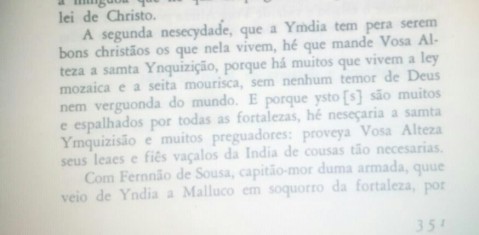
“The second necessity for the Christians is that your majesty
establish the Holy Inquisition, because there are many who
live according to the Jewish law, and according to the Mahomedan
sect, without any fear of God or shame of the world. And since
there are many who are spread all over the fortresses, there is
the need of the Holy Inquisition and of many preachers. Your
majesty should provide such necessary things for your loyal and
faithful subjects in India.”
III.1.1. Evaluating the letter.
First of all he mentions that the newly converts were living among the Jews and the Mohammedans and they were falling back to these religious laws to which they formerly belonged. He does not mention idolators, or Hindus or Pagans or Heathen practices.
Secondly, no letter of his ever mentions the need of inquisition in Goa prior to 16 May 1546 nor after that. He wrote aletter to King John III on 20 January 1545 from Kochin, India but no mention of Inquisition. Yet another letter from Kochin on 20th January 1548 to King John III does not mention the inquisition. Another letter to king John III from Kochin on 28 January 1549. One more letter to King John III from Malacca in 1549. Yet another letter to King John III from Malacca on 23 June 1549. Letter from Goa to King John III on 10 April 1552. In all these letters there have never been any mention of the inquisition and in fact he never mentioned inquisition in letters written from mainland India (Kochin and Goa). He wrote only one letter from Amboyna and mostly he visited Amboyna only once. Whereas he visited Kochin several times and was often in Goa. There are more than one letter from Goa and Kochin. None of them mention the need of Inquisition[20].
The letter in which this mention is recorded was in fact written from Aboyna, Malacaus. And he refered to it as India.[21] So what is this place? Amboyna Malacaus is modern day Ambona Island of the Maluku Island districts of Indonesia. Undeniably the presence of the Jews and Muslims there was the most populous. As Goa was considered to be the capital of the Portuguese colonies of the East and every place they discovered was considered to be India, hence the modern name Indo-nesia. Its colonial name was “Indian Islands.”[22] Therefore there is raised a question and doubt, did St. Francis Xavier suggest Inquisition in India as such in particular Goa? Or did he mean specifically Amboyna Malacaus and not any other territory? In his previous and later letters as well he had specifically mentioned Goa…why did he not mention it in this letter?
III.1.2. St. Francis Xavier: voice of the voiceless
Given the background that Afonso Albuquerque had managed to convert many even before the arrival of St. Francis Xavier, this holy man was not pleased the way it was done. They had been not properly instructed. And thus he spent time in catechising them and translating the catechism in the local languages. Francis Xavier was in fact ardently against the Caste system in India which exploited the lower castes.
.
To the Society at Rome, 1543, Tuticorin
The Brahmins
eat sumptuous meals to the sound of drums, and make the
ignorant believe that the gods are banqueting. When they are
in need of any supplies, and even before, they give out to the
people that the gods are angry because the things they have
asked for have not been sent, and that if the people do not
take care, the gods will punish them by slaughter, disease, and
the assaults of the devils. And the poor ignorant creatures,
with the fear of the gods before them, obey them implicitly.
These Brahmins have barely a tincture of literature, but they
make up for their poverty in learning by cunning and malice.
Those who belong to these parts are very indignant with me
for exposing their tricks.
I had been living for nearly four months in a Christian
village, occupied in translating the Catechism. A great number
of natives came from all parts to entreat me to take the trouble
to go to their houses and call on God by the bedsides of their
sick relatives.[23]
The second accusation laid out against him was that he was a good friend of the Portuguese and hence participated in their brutal acts. But the facts show a different picture. The only purpose Francis Xavier lived for was to spread the good news of Christ to others and draw souls to him and save the souls. The following extracts from the letters of St. Francis Xavier will clearly show us that he actually fought for justice against native Indians and the discrimination done by the Portuguese and for equality of native Christians.
From Munahpaud, March 20th, 1544.
I wish you to write and tell the Commandant how much
I am distressed at this act of violence on the person of the
Rajah of Travancore’s slave, not only on account of the bad
feeling which so scandalous a crime must produce, but also
on account of the positive evils which threaten us in conse-
quence of it. I myself have almost made up my mind never to
write again on such matters, for these people want to do just
what comes into their head, and they can’t bear to be told
what is disagreeable to hear. They seem to think that it is
an injury and an insult to them if any one dares to open his
mouth while they are trampling on rights of all kinds.
And let
the Portuguese who had him arrested come here and make his
claim or his complaint, and he will find all that consideration
of his rights which is needed to give him full satisfaction.
I wonder whether the Portuguese would think it good if,
when one of the natives happened to have a dispute with one
of themselves, he was to seize the Portuguese by main force,
put him in chains, and have him taken out of a place in our
territory and carried up the country? Certainly not. The
Indians must have the same feelings; why should we do to
them what we don’t wish to be done to oui selves ? Why should
we be astonished that they, like ourselves, are indignant when
they are injured? There would be more to excuse the aggres-
sion if they denied us justice ; but what plausible excuse can
we plead now, when they undertake to do justice with the
utmost faithfulness, observe exactly all the conditions of the
Is it true that a Portuguese has seized a
slave of the Rajah of Travancore within the territory of the
latter? If he has, what reason does he allege for it, and does
he really intend to take the man to Tuticorin, and for what?
1 should be very glad to hear something at least which may
diminish the atrocity of this detestable action, and prove that
report had exaggerated it. If there is no way of lightening
the ill feeling which has been caused, and if the facts really
are what they are said to be, then I must give up my plan of
going to see the Rajah, with whom I was going to treat of
matters concerning the service of God. You well know how
these people are incensed at these seizures of slaves, especially
from territory of their own; and there can be no doubt that
they must all be calling out for vengeance, and heaping re-
proaches upon the whole race of Portuguese, and even on the
Christian religion. It would never be wise for me to expose
myself to all this hostility. No, I shall have to think of going
elsewhere. I have long thought of it, and now shall have to
set myself to work to carry it out. I have long had the idea
suggesting itself to my mind, and it really seems very attrac-
tive, of leaving India altogether, where so many obstacles are
placed in the way of the advancement of the Gospel from
quarters from which least of all such obstacles should arise, [24]
From Munahpaud, March 24th, 1544.
I heard three days
ago from the Patangatins of a most wicked act of violence
— the seizure of several slave girls — committed at Punical by
certain Portuguese. As soon as I heard the miserable news I wrote to the Bishop’s vicars at Coulan^ and Cochin, begging
them earnestly to publish a threat of the major excommuni-
cation against the ravishers, and to make a public inquiry who
they are, that their names may be known, their prey rescued
from them, and the penalty enjoined by the law inflicted on
them to warn others by their example.[25]
III.1.3. EVALUATING THE CHARGES
The fact of the matter is that the inquisition never happened in the lifetime of St. Francis Xavier. It took place 15 years after the alleged letter and 8 years after his death. First of all, No one can be sure as to what version of inquisition he had suggested. Some historians suggest that since St. Francis was in Portugal during the Portuguese Inquisition and had actually participated in the Auta De Fe. But as we have seen earlier the establishment of Inquisition needed the approval of the Papal Bull. Though Pope Paul III had established the office in Portugal was another Bull needed to approve its Institution in Goa? Since the Inquisition in the Portuguese colony was established much later?
III.1.4. MIRACLES
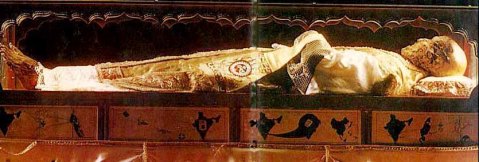
While many are busy quoting St. Xavier’s letters only to defame him and prove Christianity as foreign religion and as an evil, they forget that the same letters speak about the miracles which happened through his prayers and later after his death through his intervention. His incorrupt body, though many may have doubts, was the pushing cart for many to get converted[26]. The difference between a mummified body and the miraculously incorrupt bodies is defined in foot note. The miracles are not only recorded in the historical writings, but many native Goans Catholic and Hindus have been told of this miracle worker by their ancestors. It is also said that he appeared even after his death (I have a Hindu friend who got a dream of St. Xavier asking him to go to old Goa. He did not know who it was until he came to Old Goa and saw the picture of St. Xavier and he was shocked.)the miracles are back bone of Christianity, starting from the Miracles of Jesus and the Resurrection being the greatest (doubts about which can be discussed later) many just try to neglect this important part in Christianity and thus create their own myths. St. Xavier was known also for raising the dead as he did to a girl, healing the lepors, sick and even commanding the nature in Jesus’ name. much of it can be found in the books written on his life. People till today irrespective of their religion have experienced many miracles even to the present day. Therefore, just to say that everyone who converted they did so out of malice, or bribe, or force is complete injustice to truth.
III.1.5. REMARKS
Portuguese colony so the Bull of Portuguese inquisition is also applied for Goa like the Papal Bull which established the Inquisition in Spain and its colonies, but it was taken to effect immediately. Secondly, St. Francis never again mentions the need of inquisition nor does he specify as to where he wants it to be established. Thirdly, though so many allegations are charged against St. Xavier, many forget that the letters written by him which we take as evidence and many try to spark fire of hatred, the same letters mention he MIRACLES done by him. Some even are spreading the news that he destroyed the culture but the letters prove that he actually learned the native languages, roamed with native people and ate their food. What about his clothings? Well he could not do anything about it because as a Priest it is demanded of every priest that they remain in their Cassock all the time. Certain liberties were rewarded only after the second Vatican Council (1962-1965).
- The inquisition was meant for wiping out Hindu religion and many were burnt at stakes and executed…how true is it?
All the historians agree that the inquisition was not meant for any other but the Newly convert Christians who were falling back to their old practices.
Francis Pyrard, a French traveller, was in Goa during the
period July 1608 to January 1610. In his account of his travels
he gives the following information of the Inquisition of Goa :
The Indian Gentiles and Moors, of whatsover religion,
are not subject to this Inquisition unless they have become
Christians, and even then are not so rigorously dealt with as the Portuguese or New Christians from Portugal, or other Christians
from Europe. But if peradventure an Indian, Moor, or Gentile
inhabitant of Goa, had dissuaded or hindered another that was
minded to become Christian, and that was proved against him, he
would be punished by the Inquisition, as would be he who has
caused another to quit Christianity; such cases often happen.
The reason why they treat these Indian thus rigorously is that
they suppose tluit they cannot be so steadfast in the faith as the old
Christians ; also that it will prevent the rest from being led astray.
For the same reason, too, they permit them to retain some of their
petty Gentile and Mahomedan superstitions, such as not eating
pork or beef, not drinking wine, and keeping to their former
dress and ornaments, that is among men as well as women that
are become Christians.[27]
In fact there are evidences that the Portuguese brought about certain reforms in the society which the Hindu community had imposed on others and oppressed the lower class and women. For example the Portuguese dealt strictly with Sati.
“ No Hindu woman, living in the territories of Salsete or
Bardez, or in this island of Goa or any other island annexed thereto,
shall bum herself alive on account of the death of her husband.
Any person who causes such a woman to be burnt alive, or for that
purpose render an advice or help, be he a relation of the woman who
has burnt herself or not, shall be liable to the penalty of loss of his entire estate, one half to the person who denounces him and the other for the works of the home of Apostle St. Thomas, and im¬ prisonment for life.[28]
- There were forced conversions. Really? The Newly converts were forcefully converted and were returning to their old religion out of love for it…really?? Hindus were persecuted and temples were broken down. How true is it and Was it a regular event?
This is a big question. In fact these are many questions. I formally thought of addressing it one by one but these are interconnected and I may repeat things again and again that’s why I thought of integrating them together. And once again I would like to remind that we need to move from interpreting history to interpreting history in its context and circumstances. We cannot interpret histories according to the mindset and concepts of today. Just some decades ago, some tribes of the African deserts were cannibals, they have recently stopped their taste for human meat. Can you still judge them?
III.3.1. NO FORCED CONVERSIONS AS REGULAR PATTERN
Well, it is true that Afonso Albuquerque used a very easy technique to get the people to be Christians. However, we should know that it was the part of agreement with the local Hindus and the Portuguese under Albuquerque when they sought his help to fight the Muslims. If they were not happy with it shouldn’t they have rather died for their religion instead of converting to new one? Bragging about the situation makes no sense. Therefore, what people like Shefali try to show a picture is that they were forced. Not at all, they had a choice and an agreement. If you ask me whether there forced conversions in times of St. Francis Xavier or if he forcefully converted anyone the I would give a certainly NO.
Let me first begin by saying that in the year 1567 the Portuguese King had come out with the edict that no one should be forced to convert or there would be severe punishment.
“ In the first place it is hereby laid down that it is not lawful
to bring to our faith and baptism any person by force with threats
and terror, because no one comes to Christ by faith unless brought
by the Celestial father with voluntary love and prevenient grace.
Just as a person if by his free will he succumbs to the temptations
of the Devil, perishes, so also if he responds to the call and grace
of God he saves himself. The unbelievers should be brought to
the true faith by the example of our lives, preaching of the
truth of our law and the confutation of their errors so that by
recognition of these things, they will give up their lies, and be
received in Christ, who is the way, the truth and the life. Those
who wish to bring the unbelievers to the true faith must also seek
to cultivate gentleness and goodness in order that they may win
persons to Christ, not merely by their preachings but also by kindness, courtesy and service .”[29]
We should evaluate this edict. It was not merely any other order with a selfish motive behind the mind of the King to protect trade but a deep theological discourse. First of all he quotes the Scriptures to draw his conclusion.
no one comes to Christ by faith unless brought
by the Celestial father with voluntary love and prevenient grace.
These are the words of Jesus who said “no one can come to me unless the heavenly Father draws him to me” (John 6:44). Then he gives a short theological discourse on free will saying that if by free will we fall into temptation then by free will we should choose to love God. He also places a challenge to the missionaries to live a righteous and holy life in order to bear example and give witness to Jesus and then he says that we need to prove the righteousness of Christian faith and refute the errors. He also demands kindness and compassion from the missionaries who work to draw souls to Christ. This is indeed a theological reflection set in the edict which left no place for any missionary to challenge the edict.
Mr. Priolkar also cites an account given by a contemporary historian at that time that they were not forced but asked about their consent to convert.[30] However then he tries to nullify this fact by quoting the former High Court judge of Goa Dr. Antonio Noronha who said the following:
“ Until 1560 in Salsete there existed but one church and
mission house in the fort of Rachol. In the course of less than
50 years a major part of the inhabitants of that province had
embraced Christianity and 28 parishes had been established. It
is known how such rapid and extensive conversions took place :
some by fear of physical force ; others from moral cowardice;
many because they could not overcome the love for the country
of their birth from which they would otherwise be expelled ; not
a few to avoid the loss of their properties and interests ; some with
their eyes on lucrative jobs—and almost none from conviction.
The conviction, the faith, these would come later….”[31]
Good arguments but there are many facts missing. We should remember that by 1560 the miracle of the incorrupt body of St. Francis Xavier had reached Goa and many were talking about the miracles he did. Would they not be attracted to the religion he preached so earnestly? St. Xavier was known for his compassion and support for the lower caste, he had interacted with them, with the attraction and respect of this Saint and given the fact that the lower caste were majority, isn’t it natural they would convert? Why miss out on this then. This answer itself bring about so many controversies and contradictions held by the Hindus. Let me give you some facts:
Since 1851, the Christian population of Goa has been facing a continual decline. Consequentially, the percentage of the Christian population (once a majority) has been shifting in favour of the Hindus.
As per the data available, Christians constituted 63.83 per cent (232,189 individuals), whereas Hindus comprised just 35.42 per cent (128,824 individuals) in the 1851 census.[32] The next census was carried out in 1881, according to which Christians were 58 per cent, while Hindus were 42 per cent of the population.
The percentage of the Christian population went on declining in the subsequent censuses for the years 1900, 1910, 1921, 1931, 1950, and 1960, with the percentage of Christians in the censuses being 54.83 per cent, 54.76 per cent, 52.29 per cent, 49.00 per cent, 42.18 per cent, and 38.07 per cent. The reason for this was the out-migration of Christians and the probable return of the descendants of Hindu migrants who had fled Goa as well as mass immigration of non ethnic Goans into Goa.
In 1998, Goa’s population was estimated to be just over 1.3 million persons, of which 62 per cent (806,000 individuals) were Hindu and 34 per cent (442,000 individuals) were Christians.[33] I wonder what Dr. Antonio would say about the census and how he would explain the decline of Christian population and rise of Hinduism though the reasons are mentioned isn’t it?
Well this is exactly the problem. First the Hindus say that there were forced conversions. Then I ask why there was not much chrsitian presence in Ponda, Sattari, Sanguem, Valpoi. They answer saying that the local kings and rulers like the Ranes fought against the Portuguese. Fantastic. They were defeated by the Portuguese. They also defeated the Marathas. Secondly the first ever Church in Salcete was at Rachol. Do you know where Rachol Church? It is at the bank of river Zuari just on the other side of Shiroda the neighbouring village to Ponda. Many Hindus claim that during inquisition they fled to Ponda where they have their Mangueshi temple, could the Portuguese who defeated the Ranes and the Marathas not reach these internal areas? Could they who so much wanted to convert the people not reach these areas and convert them? If no then why? Well then here is the answer, the Jesuit missionaries in 1700 and this was in the inquisition period, yet the mangueshi temple and all were not destroyed. We must know one thing that the Portuguese had conquests only in which are today from Bardez to Salcete and later uptil Quepem. The rest were mission areas. Therefore it depends that when the survey was done, which parts were surveyed.
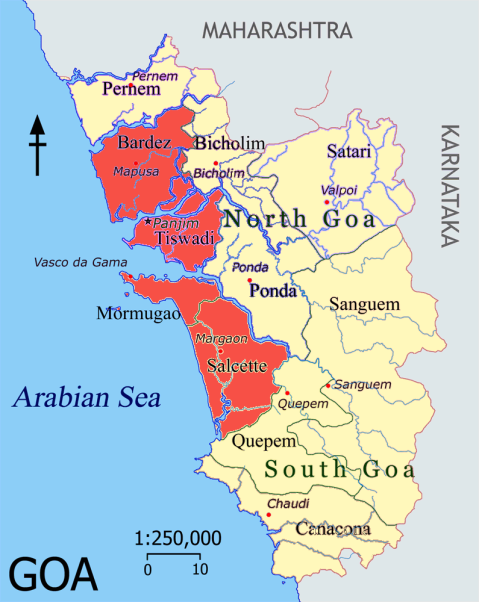
III.3.2. Refutation of Dr. Antonio Noronhas Comment on churches built in 1560s
The answer remains is about Dr. Antonios comment about the 1560s building of many churches. So here it is, though many Church structures which exist till date were built in the 16th or 17th century they were not all churches, they were chapels and precisely smaller in size compared to present structures. They were extended and modified later. For example, St. Alex Church of Curtorim Salcete South Goa was a Chapel built in 1597. It was raised to the level of a church and a separate parish only in the year 1808. St Francis Xavier Church Macasana Salcete South Goa was a chapel built in 1651 which had remained a chapel of the church of Curtorim and was elevated to the status of the church in on August 12 1809 prior to that, it was ransacked by the Marathas in 1739. There is another church in Curtorim in Maina, called St. Ritas Church it was built as a chapel in in 1782 and raised as a church in 1960. St. John the Baptist Church was built in 1581 in Colva but then shifted on the hillock in Benaulim in 1596 and then later reconstructed. The Our Lady of Rosary Church Navelim was built in 1597 and it was ransacked by Marathas in 1717 and 1739 and was rebuilt on both occasions by the Parishoners. Therefore many churches which stand today were once small chapels which elevated to churches after 1 or 2 centuries. The oldest churches from the 16th century which stand today are:
- Our Lady of Snows Church Rachol (1556)the first and oldest in Salcete South Goa. Was gifted by the Vijaynagara Empire King Krishnadeva in 1521.
- Holy Spirit Church Margao. (1564) though was destroyed and built again five times.
- Our Lady of Rosary Church Navelim. (1597)
- Mother of God Church Majorda. (1588)
- John the Baptist Church Benaulim (1581)
- Saviour of the World Church Lotoulim (1586).
- Michaels Church Orlim (1568)
- Our Lady of Soccoro Church Carmona, (1607)
Thus, once again, these are the only churches as such built in the 16th century in the south Goan Salcete taluka and the rest were built in the Northern District some prior to those in Salcete and some in the times. But all of it if considered within the 50 years mentioned by Dr. Antonio, does not make up the number 28 and not all of it were churches but chapels. Secondly, not all churches are parishes. In Old Goa, we have the Basilica of Bom Jesus, Se Cathedral, Church of St. Francis of Assisi, Church of St. Cajetan and chapel of St. Catherine. But there is only one Parish and parish church, Se Cathedral. Therefore we need to make a difference between a Church and a Parish Church.
To conclude on this point, the miracles of St. Francis Xavier, the incorrupt body of the Saint and the troubles given by the high caste or upper caste were good reasons for the lower caste communities to escape the brutality of the upper caste. There were some from the upper caste as well who had converted. Like the Brahmin Logu and his family.
On November 6, 1541,
The baptism of Loqu was celebrated with great eclat. The
Archbishop officiated personally at the ceremony and the Govern¬
or acted as Godfather. Loqu, his wife and nephew were given
the names of Lucas, Isabel and Antonio [34]
Could there have been forced conversions ? if forced conversions had not happened then the king would not come out with the edict. However to say that it was a regular process through out the inquisition then that would be unjust and at the same time to say that it never happened is also unjust. It is certain that only when the reports were sent to the king he gave the edict.
There are also other means which are suggested as to why people would convert to Christianity. For example lurement to wealth and privileges. Mr. Priolkar does mention that certain privileges were given to Christians. He mentions the provisions from the edict of the 19th century and narrates an instance from 16th century.
a Jesuit Priest The following letter written in Spanish on October 10, 1547
“ The people of this country who become Christians do so
purely for temporal advantage, as is inevitable in a land where
slavery reigns. Slaves of the Moors or Hindus seek baptism in
order to secure their manumission at the hands of the Portuguese.
Others do so to get protection from tyrants, or for the sake of
a turban, a shirt, or some other trifle they covet, or to escape being
hanged, or to be able to associate with Christian women. The
man who embraces the faith from honest conviction is regarded
as a fool. They are baptized whenever or wherever they express
a wish for the Sacrament, without any instruction, and many revert to their former paganism ….”[35]
should we take this letter as proof of allurements or bribery or attraction to money or as an expression by the missionaries themselves who wanted conviction as a base for conversion and not to get lured by the wealth and provisions? Should we not appreciate the missionaries who actually tried to discern their conscience regarding conversion and its purpose? We must note that it is the people who used to get lured and not the missionaries who used to tempt them with riches and provisions. They did it with the mind, as I narrated earlier, to serve the poor and provide for the needy, a Christian duty.
On the 50th anniversary of the liberation of Goa, the Manohar Parrikar BJP Government had released a documentary on Door Darshan trying to show the evil the Portuguese had done and a part of the inquisition as well. In it he showed how the forceful methods were used by throwing bread into the water and whoever drank it was considered to be Christian, then throwing rice over the roofs of the houses and so on. Well there is no documentation or proof to prove it. It looks like it has been an invention by the Hindus themselves, who considered eating of the foreigners food or of the lower caste as impurity. Thus as contempt to these events and since the lower caste had become Christians and were the privileged ones, it was a result of their jealousy and hatred that resulted in such myths.
III.3.3. The Portuguese care on Executions:
The Portuguese took keen steps to avoid involving Hindus suffer the inquisition. There are records as to how the newly converts misused the inquisition:
For instance, in a letter addressed by the
king of Portugal to the vice-roy of India on March 24, 1702,
we find a reference to the arrest of six recent Indian converts
who moved from door to door demanding money from the Hindu
residents under the threat that if the latter refused they would be
falsely denounced to the Inquisitor Frei Manoel de Assump^ao
as having hidden away Hindu orphans to prevent their being
baptised. king of Portugal to the vice-roy of India on March 24, 1702,
There are also cases when the other Hindus handed over Hindus to be executed by the inquisitors on false charges so also the same letter proves that the Hindus were exempted from the Inquisition and care was taken to allow them to perform their religious rituals. The only thing they needed to take care was not to involve any Christians in their worship or ritual. It is also proven that the king was also benevolent to the Hindus. But since there were certain violations Thus there came certain restrictions:
But there were cases where
Hindus accused other Hindus out of malice. Wc reproduce
hereunder a petition addressed by the Hindu residents to the
king of Portugal in which one of the requests made is that the
Holy Office should be ordered not to take cognisance of accusa¬
tions against Hindus for which the sole evidence was the denuncia¬
tion made by their correligionists. The petition also provides an
idea of the extent of harassment to which the Holy Office subject¬
ed the Hindu population :
“ Sir, the Hindus, who with their homes, families and friends
live in the territories in India which are Your Majesty’s royal
dominion, by birth and domicile receive the favours of Your
Majesty and the privilege of being recognised as your Majesty’s
subjects, serve Your Majesty both in the island of Goa and the
adjoining islands as well in the territories to the North, carry on
their occupations and have won the confidence of Your Majesty’s
representatives the Viceroys of India and have shown their zeal
in the royal service by complying with all the obligations as
regards donations, taxes and pensions which are imposed on them ;
which facts being well-known speak for themselves and require
no document to support them, state that as residents of the terri¬
tories under the Royal Crown of Your Majesty, they are
oppressed by certain procedures of the Holy Office, in the
undernoted cases. “ When the Hindus denounce the crimes of other Hindus to
the Holy Office it is obvious that they cannot have been prompted
by zeal for the Christian faith but only by private hatred and
anger, since had the motive been zeal they would have converted
themselves to Christianity, and as they are motivated by hatred
they cannot be legitimate witnesses in the matters which they
denounce. Having regard to this fact, we beg that the Holy
Office should not take cognisance of any crime of which one Hindu
is denounced by other Hindus, unless it is proved that the crime
of which information is given was offensive for having been
committed in public where the Christians could watch it, or Christ¬
ians were associates or accomplices therein.it is desired that
what Your Majesty has ordered in the matter should be observed
wholly and completely, viz. that if the Hindus ‘are guilty of per¬
forming their ceremonies in public and thereby causing offence,
or even if performing them in secret associate Christians therein,
they should be punished by the Holy Office. From this prohi¬
bition, it is clear that those who perform such ceremonies in secret,
without attendance of Christians and without such publicity as
to enable Christians to see them, are exempted from the said
punishment, since such performance is neither offensive nor
likely to prevent the increase of Christianity.
“ That the Holy office do not take cognisance of any crime
by denunciation and proof furnished by Hindus alone, and
unless it is proved that in the crimes of which information is given
Christians were associated or that they were performed with
such publicity as to by itself cause offence to Christianity; and
“ that they be permitted to have their schools in their homes
to enable them to teach their sons the languages and sciences by
the use of books which teach them and through teachers appoint¬
ed for that purpose.
“ As Your Majesty has granted to the Hindus in the fortress
of Diu favours in this matter greater than those for which the
supplicants pray similar concessions may be granted to the
Hindu population of Goa, adjacent islands and the northern
territories who are more deserving of the same and zealous in the
service of Your Majesty and we pray that after Your Majesty has
generously granted the concessions, Your Majesty’s Viceroy
may see that they are observed in their entirety.”[36]
Then certain restrictions were placed on them like the thread ceremony.
The thread ceremony of young sons of the Hindus had
also to be performed outside the Portuguese territories. Having
regard to the inconvenience which this caused both to the people
and the government, on October 25, 1720 viceroy Jofto Saldanha
dc Gama issued the following order :
“ 1 hereby order that no Hindu subject proceed beyond the
borders of the state to celebrate the thread ceremony, and in order
to enable them to do so at their convenience and that of the state,
I fix for the Hindu subjects of Goa the island of Cumbarjua, for
those of Salsete the village of Cuncolim and for those of Bardez
the island of Corjuem, and in these parts they may invite their
Botlos according to usage for a period of five days, provided they
first obtain my permission and inform the captains of fortresses
and officers of the boats of the arrival and departure of the said
Bottos, and perform the said celebrations behind closed doors in
the form laid down in the orders of His Majesty in respect of
marriages and other ceremonies. In the event of their proceeding
to the neighbouring lands to perform the said celebrations or
performing them in a form other than that hereby permitted,
they shall incur the penalty of deportation to the lands of the
North for a period of two years and a fine of 500 xerafins for the
expenses of the docks.”[37]
It is also interesting to know that Portuguese took care to execute those who handed over Hindus to inquisitors without any charges. Also who troubled the Hindus by falsely charging them with crimes. Whenever such instances came severe action was taken.
Unscru¬ pulous persons also extorted money from Hindu families by
threatening to report orphans to the Inquisitors. In a letter
dated March 24?, 1702 addressed by the King to the viceroy he
refers to certain incidents of this type. He writes :
“ Having seen the account given by you of the procedure
adopted by the Inquisitor Frei Manoel da Assump<;ao in taking
away sons of Hindus even when their mothers were living, which
was illegal, and in this connection having imprisoned in the prisons
of Holy Olfiee certain Hindus, contractors of my revenues, who
had approached him with a request to conform to the laws which
had been passed on the subject, without consent or any order of
the Tribunal other than his own word ; ana mat as a result many
Hindus have migrated to the mainland and contracts have been
discontinued ; that to avoid the great harm which would result,
from such procedures and the loss to the State which would ensue,
you used the most suave methods you could think of, without
raising issues of conflict of jurisdictions, having called the Inqui¬
sitors to your presence and shown them the law which I had ordered
to be passed in the matter; and that having seen the same
they replied uniformly that, they had not concurred in the
procedures which the Inquisitor Frei Manoel de Assump^ao
had adopted, and that earlier they had always expressed
the contrary view; upon which you decided to order the
said Inquisitor to release the prisoners, which lie promptly
obeyed and did not interfere further with the said boys;
that, however, after the said Hindus had been released, they
complained that a broker of the said Frei Manuel had asked their
wives to pay 6000 Xerafins in order to secure their release ;
that, when you ordered the said Hindu broker to be arrested he
confessed having received the said sum of 6000 Xerafins but that
it was by way of alms to N. Senhora do Monte, of the hermitage
in which the said Inquisitor lived and that in the same
manner were arrested six Christians recently converted for hav¬
ing moved from house to house of the Hindus demanding money,
threatening that if they did not pay they would be denounced to
Frei Manoel for having hidden away children…”[38]
Another instance:
llamogy Sinay Cottary, the diplomatic agent mentioned
above, was himself exempted from the application of this law.
He was a native of Quelossim (Salsete), but in order to escape
the oppressive law’, had chosen to live at Bicholim, which was
then under Muslim rule. However, in recognition of his political
services, governors Francisco de Melo e Castro and Antonio
Souza Coutinho secured a royal decree on January 3,1659 exempt¬
ing him from the application of the law. The order ran as follows :
The said Ramogy Sinay and his family are permitted to
live in my lands and on his death and that of any of his descend¬
ants, children major or minor should not be taken away for
being made Christians nor should their estates be taken away nor
should such children be removed from the protection of their
mothers nor should any relative be harassed to hand over such
children and they may continue to live freely without any dis¬
ability. And in the same manner, their estates should not be
confiscated to the Royal treasury on the ground that they died
without living male heirs, notwithstanding any provisions to the
contrary in the revenue codes, laws or charters.” [39]
- REVERTING BACK TO OLD PRACTICES AND DESTRUCTION OF TEMPLES? THE ROOTS OF HINDUISM AND ITS BELIEFS.
Till date many acclaim and say that Hindu temples were broken down by the Portuguese. Well first of all Mr. Priolkar gives an account of a Pagoda being destroyed from the island of Diwar. The Question is from when did the Pagoda become a Hindu temple? It was being destroyed since no one was using it. Let us come to the core of the whole issue. It seems to show a controversy between Christians and Hindus. But the HINDUISM of today was not the Hinduism of yesterday. The very word Hindu is a Persian, Portuguese and British concept. Prior to their coming in India what is Hinduism today were many different religions. Hinduism of today is an integration or synchronisation of these various religions who were often at war with each other as MRs Romila Thappar a historian and researcher claimed.[40] No wonder the enemity among the Hindus was seen during the inquisition period where Hindus handed over other Hindus. The caste system was so prevalent and is still now this has been a result of this wars between the Brahminical or Vedic Religion with the other religions categorised as animists and spiriticists. Therefore historians like Romila Thappar suggest that once upon a time in history the Brahmins with the help of Kshatriyas forcefully made the other religions accept the vedic beliefs or Brahminical beliefs. Since the kshatriyas were dominant rulers the subjects who followed their own cults had to synchronise with their beliefs.[41] And this is so evident even today. Keeping this background let me bring to the notice of my readers that the same is true in Goa. Let us not think that the Hinduism as is practiced in North India is the same here in Goa. No. there are some temples where animal sacrifices are done (Goddier temple in south Goa). There are temples which worship dead spirits (spiriticism) [bhutanchi zatra or Gadyachi zatra in Bicholim] and many more. The Gaddis (tantriks in North Indian concept would be the best equivalent for the word) is still prevalent in Goa.
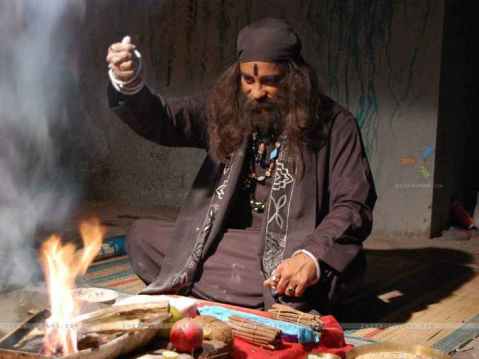
The newly converted Christians would indulge in even child sacrifices, animal sacrifices and spiritcism, black magic and so on.[42] When we speak of newly converts falling back to their old practices, it were probably these practices. Many ancestral houses from Portuguese times have been discovered with pottlis (a bundle with red cloth containing human hair or skulls or bones). Many of the lower caste converts used to visit the Gaddis (tantris) of the village. Therefore when we talk of Hindu practices, we need to understand the context of the time.
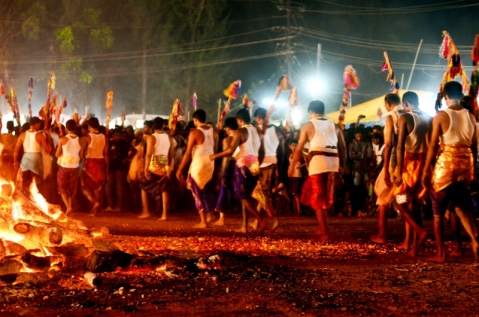
When the Portuguese broke the temples can it be called Hindu temples? Fr. Victor Ferrao in his research paper said that the temples which were broken were not Hindu temples as Hinduism is understood in today’s context. “It important to assert that we have not come from Hinduism of today, but the then fragmented cults that today have been steadily assimilated into Hinduism of today,” Ferrao said, quoting noted historian Romila Thapar to back his treatise.
“Though the temples that were demolished were not Hindu, but one(s) that belonged to different cults that have united into Hinduism of today the Hindu community is certainly carrying the pain of this false impression,” the paper reads.[43]
Some of the Brahmins still remained in the old conquests and new Conquests where Catholics were dominant. That is because they made themselves distinct from other Hindus and enjoyed the privileges of the Portuguese Government. Therefore will it be right to say that the Portuguese tried to destroy the Hindu religion? Probably they did not know the difference between the Vedic religions and the other religions. Thus when the new converts were falling back to their old practices meant the cult practices other than just poojas, aartis and bhajans. Since the Portuguese did not know the difference, they just went clubbing every ritual practice as Hindu.
- THE MISSIONARIES TRIED TO DESTROY THE CULTURE. IS IT TRUE? DID THEY CREATE INTOLERANCE BY NEGATING IDOL WORSHIP?
III.5.1. Inculturation:
Another misconception that goes around is that the missionaries tried to destroy the culture of the place. Oh really? Facts refer to something else. When the missionaries came to Goa they learned the local language, translated the catechism in local language, some of them dressed like the native yet revealed their Christian identity. St. Francis Xavier himself was a great inculturalist. He learned the local language and translated the Catechism in Konkani. Another great examples are Fr. Thomas Stephens and St. Robert de Nobili.
III.5.1.a. Fr. Thomas Stephens
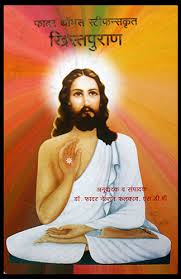
He was superior of Salcete (1590–1596) and in such capacity had to handle the aftermath of the death of the so-called martyrs of Cuncolim (1583). Except for a year in Vasai (Bassein), Portuguese holding north of Bombay (Mumbai), he spent all his pastoral years in Salcete, being parish priest in Margão, Benaulim, Marmugão, Navelim and several other places. He died in Salcete in 1619.
It is very likely that Roberto de Nobili, SJ, met Thomas Stephens upon landing in Goa, and before proceeding to the Madurai Mission. Falcao has shown that there are terms common to both these pioneers of inculturation, e.g. jnana-snana (bath of knowledge or enlightenment), a term which Stephens used for baptism, and which de Nobili seems to have borrowed; the term is still current in Tamil Christian usage. Stephens died in Salcete, Goa, aged about 70.
Stephens is remembered above all for his contribution to the Konkani in the Roman script. His Arte da lingoa Canarim, written in Portuguese, was the first printed grammar of what is now called the Konkani language. It was published in 1640, as enlarged by Diogo Ribeiro, SJ and four other Jesuits, and became the first ever printed Indian Language grammar. The published work bore the title Arte da lingoa Canarim composta pelo Padre Thomaz Estevão da Companhia de IESUS & acrecentada pello Padre Diogo Ribeiro da mesma Cõpanhia e nouemente reuista & emendada por outros quarto Padres da mesma Companhia. 1640. A second edition was produced by J.H. da Cunha Rivara, and published under the title: Grammatica da Lingua Concani composta pelo Padre Thomaz Estevão e accrescentada por outros Padres da Companhia de Jesus. Segunda Impressão, correcta e annotada, a que precede como introducção A Memoria sobre a Distribução Geographica das Principaes Linguas da India por Sir Erskine Perry, e o Ensaio historico da lingua Concani pelo Editor. Ed. J.H. da Cunha Rivara. Nova Goa: Imprensa Nacional. 1857. The language, called Canarim or Bramana-Canarim in Stephens’ time, was, by the time of Cunha Rivara, known as Konkani. Recently a facsimile print of the 1640 edition was published in Goa.
Stephens also prepared a catechism in the same language, as per the instruction of the council of Trent. The Doutrina Christam em Lingoa Bramana Canarim (translation: Christian Doctrine in the Canarese Brahman Language) incorporates also a collection of Christian prayers in Konkani. It is the first Konkani Book to be published and has the distinction of being second book published in an Indian language behind a book of similar kind in Tamil published from Old Goa.
III.5.1.b. Robert De Nobili.
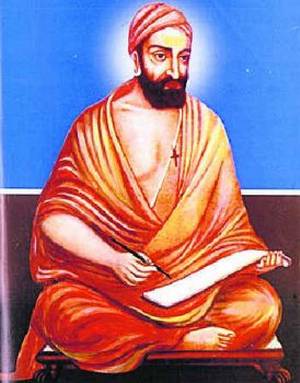
Robert de Nobili was a Missionary who dressed like a sadhu in saffron cloth, wore the Paduka and turbon on head with a rosary made of the beads used by sadhus. His method raised a fierce controversy among his fellow Jesuits and with the Archbishop of Goa Cristóvão de Sá e Lisboa. The dispute was settled by Pope Gregory XV with the Constitution Romanæ Sedis Antistes issued on 31 January 1623. The customs of the three-stringed thread, the tuft, the use of sandalwood paste on the forefront and baths were allowed, inasmuch they did not imply any superstitious ritual. The Pope invited the Indian neophytes to overcome their caste sensitivity and their contempt of the pariahs.
The Dharmic thinker Rajiv Malhotra calls this method Inculturation. By adopting native culture, he made Christianity appear less alien to natives and hence easier to adopt. His adoption of native culture came from respect and was guided by his missionary zeal to spread Christianity. The document from the Pope made way for the Indians to retain their culture and accept Christ at the same time. The thinking was, the Church has no culture of its own nor is bound to any, it has no language nor is bound to any. As long as the cultural practices did not promote superstitious ritual, practicing own culture has no objection.
Many times the mistake that many fanatic or radicalists make is equalling a religion to a culture. The false notion that Hinduism is equal to Indian culture is very dangerous and contradictory to its own claim and practice. Indian culture is not one culture but many cultures, even before the advent of Christianity and Islam. Thus, refusal of Hinduism is not equal to refusal of Indian culture.
III.5.2. Condemnation of idolatry.

Another accusation laid down against the missionaries is that they promoted religious intolerance by rejecting and destroying the idols of gods and goddesses. First of all, religious tolerance, respect for other religions, religious freedom are concepts and terminologies of the 20th century and wide practiced in 21st century. Prior to this period these concepts were budding revolutions and even prior to that all worked with a different mentality. Therefore we cannot judge the missionaries of yester years with the concepts of the modern and contemporary times. Secondly, the missionaries did challenge polytheism and idolatry because the Bible does so and it’s just not the Bible which condemns idolatry but even the Hindu scriptures condemn idolatry and upheld Monotheism.
“There is no image of him. He is unborned and He should be worshipped” (Yajurveda, Chapter 32, Verse 3)
“God is bodyless and pure” (Yajurveda, Chapter 40, Verse 8)
“They are entering darkness, those who worship the natural things(like air, water, fire etc. ), they are sinking more in darkness who worship created things.” (Yajurveda, Chapter 40, Verse 9
“Do not worship anyone besides him alone, praise him alone” (Rigveda, Book 8, Hymn 1, Verse 1)
“Praise him would matchless and alone” (Rigveda, Book 6, Hymn 45, Verse 16)
From Bhagavad Gita
“Those whose intelligence has been stolen by material desires, they worship demigods” (Bhagavad Gita, Chapter 7, Verse 20)
Prohibition of Idol Worship in Upanishad
“There is no likeness of him” (Svetasvatara Upanishad, Chapter 4, Verse 19)
“His form cannot be seen, No one can see him with the eyes” (Svetasvatara Upanishad, Chapter 4, Verse 20)
“God is one and only, not a second” (Chandogya Upanishad, Chapter 6, Section 2, Verse 1)
“Of him (God), there is no parents, no Lord” (Svetasvatara Upanishad, Chapter 6, Verse 9)
“There is only one god, Not a second one, not at all, not at all, not in a least bit” (Brahma Sutra) [44]
Even before the advent of the Portuguese missionaries to India, some Indian religious leaders themselves had challenged the Polytheistic teachings. For example Gautama Buddha condemned idolatry and Polytheistic rituals. Mahavir had done the same. The same has been done by many teachers and gurus. So why hatred towards Muslims and Christians only?
IV. THE ORIGIN OF MYTHS AROUND THE GOA INQUISITION
In the year 1994, BBC had broadcasted a documentary on the Spanish inquisition and the Myths around it. It was because of these myths that the projection of the church was shown to be the most intolerable and cruel killing of the accused and alleged witches. It busted the myths proving that the myths were created by the Protestants to defame the Catholic church. It brought out strongly that the type of tortures used were actually Protestant types of tortures. Everyone was so speaking about the Portuguese and Spanish inquisition but nobody spoke about the German inquisition, the English Inquisition and the French Inquisition[45]. Could this have been the same of the Goa inquisition? Yes! Mr. Priolkar himself admits in his books that he read a lot of the Protestant history regarding the Inquisition. His views on the Goa inquisition drew mostly from the Spanish inquisition. The illustrations and the ideas he used is of the Protestant version of the history of Inquisition. Certainly many historians will argue saying that we have documentations. But how many do they say were actually executed? On record it is 55 who were executed and around 65 who were burnt as effigies (after their death). The argument given is that since the building of the Inquisition was destroyed many records were also destroyed. How did the others survive? It will be just debated and the discussions will go on. But isn’t it sincerity from the side of the Church to let the documents be accessed? One of the first persons to write the accounts of the Inquisition were Catholic Priests. There are no documentations about methods of forced conversion like that of throwing bread in the water. There are no documentations on intentional wiping out of Indian culture and Hindu religion. It seems that though there are facts available to prove that Portuguese did condemn forced conversions, that the missionaries tried to preserve and adopt the culture of the Place, that the Catholic Church was responsible for educating the people and many Catholic Priests themselves started the Liberation movement, there is an intentional movement to defame the Church and the Catholic community. What many historians don’t focus is the conflict between the Padroado (Patronage given to Portugal) and the Propaganda Fide (the congregation established by Pope Gregory IX in 1622 to do missionary work in parts of the world where Spanish and Portuguese had not reached.[46] The lack of presence of Christians in the Ponda area, Bicholim, Satteri and so on even when the missionaries entered Ponda in 1700 during the time of the Inquisition raises questions about the so many myths around the Inquisition about forced conversion and so on. The declining number of the Christian population even from the time of the Portuguese in Goa, the documentation about religious freedom and rights of Hindus raises questions about the myths that are being spread. Can anyone answer as to why many Hindus and Christians in Goa lived peacefully even after the so called horrific Inquisition? Why Hindus and Catholics alike in Goa have great devotion to St. Francis Xavier and affectionately call him Goycho Saib?
V. INTERPRETING CONTEXTAUL AND CIRCUMSTANTIAL HISTORY
In the 2000, Pope John Paul II apologised for all the wrong the church did in the name of Christ. That instead of spreading love it became instrument of terror. He also mentioned the inquisitions in general.[47] Many times we fall prey to interpreting the past and judging people of the past from the viewpoint of concepts and ideas of today. Sometimes we wear oculus of biases and prejudices and misunderstandings and interpret history or historical events and people according to our limited knowledge. It is therefore important for us to understand the social structures, mindset, culture and circumstances of the past or of the historical events we are talking about. The context in which it happened. When it comes to St. Francis Xavier and the Portuguese and the Missionaries we must know that there was no other religion in Europe but only Christianity. Therefore their rules and norms were bound by Christian teachings. The missionary work was carried out on the basis of the command of Christ however as I said earlier they would think that once a person is baptised he or she would necessarily go to heaven and those not baptised would necessarily be damned and therefore more focus was on Baptising people than to catechise or instruct them. However, St. Francis knew the need of instructing and catechising them. The Portuguese since they believed they are the rulers would chalk out rules which were applicable in Portugal. Those were the days of kings and emperors. As I said above religious freedom, religious tolerance and respect to other religions are concepts which slowly developed as the enlightenment period marched towards the modern times. Therefore we need to be careful when wee say it is historical fact but we may miss the context.
VI. THE CASTE SYSTEM, THE DESTRUCTION OF PRE EXISTING RELIGIONS BY ARYANS AND ITS EFFECTS TILL DATE
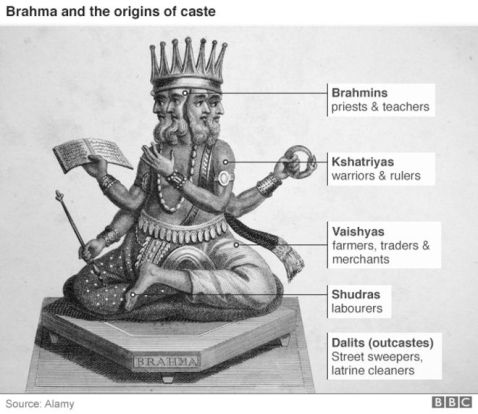
People like Shefali Vaidya and supporters and like-minded people try to project a picture of Goa prior to Portuguese reign as if everything was goody goody and peaceful. And that the Portuguese came and destroyed the whole show. Was it so? It looks like everything was working well for the Brahmins and the Kshatriyas and other upper caste people. It looks like that the conscious creation of such myths around the Goa inquisition is the result of a retaliation by the Brahmins whose authority and superiority was challenged when the lower caste people converted to Christianity and the Portuguese challenged the caste system. I have never heard or seen people like Shefali or the RSS or the VHP and other right wing Hindutva propoganists who challenge and hate Christians talking against the caste system or the injustices some of the Hindus do on basis of religion. No one has said Hinduism is bad. Once, the various Indian religions having different religious beliefs, were somehow subdued by the Brahmin class and the Kshatriya. It is evident in India that there were various religions and religious cults. They had their own scriptures and own creation stories. But it looks like the Brahminical Hinduism wanted to overrule all these and impose its own beliefs on to others and thus the caste system was created. Their scriptures either got synchronised or vanished. Some parts where the Brahminical religions did not reach there the religions survived with their own stories. Today we call them the tribal or Adivasi people of India[48]. They are the original inhabitants along with the Dravidians who were known as first settlers in India prior to the Aryans. When it comes to Goa, Shefali Vaidya herself has narrated her story of how she is one of those to settlers who came to down to Goa. They belong to the community called Saraswat Brahmins. They used to live near river Saraswati and when it got dried they moved to Goa. But were they the first settlers in Goa? No! The aboriginal or indigenous people of Goa are the Kunbis, the Gauddi, the Kharvi, the Pariahs and other known as chamar, mhar etc. there were also some kshatriya class people from the Maratha region who settled in Goa.[49] The Saraswat Brahmin and the Kshatriya instituted the caste system in Goa and were often with war with the other communities. With their military power and their superiority of their religious claims since they knew to read and write, many of the native aboriginals were suppressed and exploited. Some continued with their ancestral religions and at the same time synchronised their won cults with the beliefs of the Brahminical religions. There are quiet few parts of Goa who do not celebrate Ganesh Chaturthi and Diwali. I was surprised to see this. It shows that there were many religions in Goa who are just classified as Hindus. Thus it can be suspiciously concluded that the Brahmins are now trying to reclaim their superiority which has been challenged by the coming of the Monotheistic religions like Islam and Christianity. St. Francis Xavier was known for his resentment for the caste system and treatment of the lower caste. That’s why the majority of the people of Goa who were once the lower class call him the Goyncho Saib.
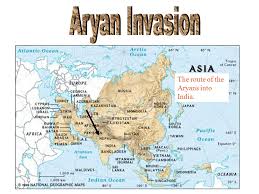
The Brahmins and the so called high class still want to dominate the society. Thus we can see the violence against the SC/ST communities and their resentment for the so called Hindu Brahmins. Many of them convert to Islam and Christianity and challenge the Brahmins and the caste system, this is what triggers them and thus they go on spreading false news about Muslims and Christians. The Bhima-Koregaon incident is unforgettable and shows the atrocities the so called Lower Caste communities had to go through[50]. However, things get politicised and those who are Pro-Caste System and insistent on the Brahminical or Hindu superiority try to politicise it or push the blame onto somebody else and try to wash clean the fanatic or radicalist Hindu ideologists.[51]
VII. THE DIABOLICAL IDEOLOGY OF HINDUTVA AND THE SOUL SEARCHING BENEVOLENT PHILOSOPHY OF HINDUISM
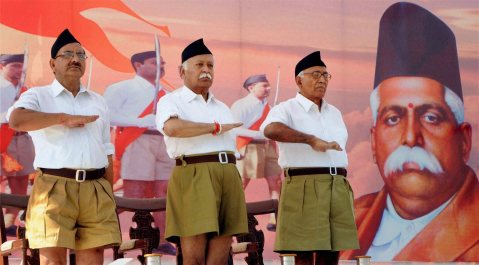
Most of the time the fundamentalists term Islam and Christianity as foreign religions and that all were Hindus and that they were converted either by force, or allurement or bribery or any other means but never religious conviction. This is a typical radical part of condemnation of other religion. Thus they want people to give up their religion and come back to Hinduism. The efforts to reclaim a Brahminical Hinduism with the superiority of the class has taken a political turn and is now evidently termed as HINDUTVA. The only purpose is to defame and negate whatever is against the Vedic or Brahminical Hinduism even the Hindus who oppose “uniformication” of Hinduism. Many liberal ideologists and historians say that Hinduism is not one religion and cannot be categorised or instituted with a hierarchical religious structure. But when such opposition is directed towards the very Hindutva ideology, it is turned into a hate campaign. Somehow, the only purpose is to term others as necessary evil and they as the Messiah. That claim for superiority still runs through the veins of the malicious people. Such ideology is against the very nature and essence of Hindu philosophy. It has been known as a religion which is open to all thoughts and practices. Does this mean that anyone who does not promote polytheism be damned and condemned? The right wing communities are constantly attacking the Abrahamic religions for their strict monotheism but as I have already quoted the Hindu scriptures, it itself promotes monotheism. The notion today which the Right wing communities like the RSS, VHP, the Sangh and the BJP in line with its ideology are promoting is that anyone talks against them is talking against Hinduism. Well, I want to make it clear to my readers RSS, VHP, BJP, Sangh are not equal to Hinduism, but rather what they themselves are doing is against the nature of Hindu philosophy. The purpose seems to be to centralise the authority back to the so called High class. Hinduism has been a fantastic lifestyle and spirituality which respects the soul searching adventure of a person. Therefore, the person is free to accept and worship any god. So I do not understand what’s the problem if any person encounters this search for God in Christ and gives witness to his teachings? Did not Buddha assert and say that he found Moksha or Nirvana and was enlightened? Did the Hindus not tolerate that? According to Hindus did not Krishna claim superiority of deity? All said and done the authenticity and credibility of a religion does not depend on how old the religion is or what the followers practice or how many followers it has or what rituals it proposes. The authenticity and credibility of a religion depends on the authenticity and its verification of the claims the religion and its founder and his or her immediate followers make and how it is verified. The religious claims because it proposes truths of life, the founder because he is the authority of teaching and the immediate or first followers because they are the best persons to interpret what is taught and claimed.
The dawn of science and its introduction by the British and Portuguese in India had borne a great challenge to the Hindu religion. It had disqualified its claims and uprooted the very foundations of the claims and teachings it proposed. It nullified the beliefs in the characters they worshipped as gods and goddesses. Saying that they never existed. Proposing the most rational arguments and turning the high class as foreigners themselves in this land. Somehow the attempt of the right wing movements is to nullify the British or scientific claims. Since it challenged the very foundation of their beliefs there has been lot of anger from the side of the believers and the Hindutva ideologists use it as a weapon of destruction. Since their authority has been constantly challenged by the rational and scientific methods which were proposed by the British and the Portuguese therefore they have been their constant enemies. There is an attempt to somehow claim that the Aryan and Dravidian settlement were myths but there are enough hard evidences to prove that Sanskrit itself is foreign language in India and that Tamil is the most ancient. The Aryan who were Persians settled in India. Thus, the Aryan settlement is a reality and that they tried to subdue the pre existing beliefs is a reality.[52]
VIII. THE CHRISTIAN MISSIONARY WORK TODAY AND THE CHALLENGES AND MISCONCEPTIONS
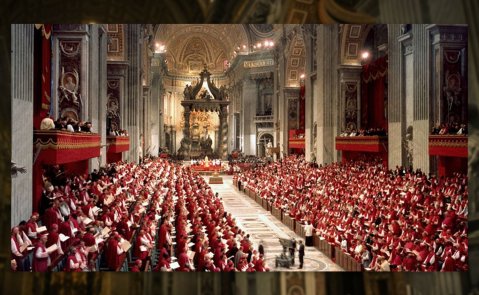
As I had said earlier that the missionary work of the Church flows from the very command of Christ to go and proclaim he good news to all people and baptise them and teach them My precepts. The Church carries out the mission of Christ the way he did. 1. It worships the only one true and living God 2. It evangelises that is it proclaims the good news given by Christ 3. It serves the poor. All these three actions are done together and one cannot be separated from the other. That is why wherever missionaries go they take provisions for the people they address and whoever is in need is bound to help them. However, many accuse the missionaries saying that we buy the persons and ask them to convert. If a person gets fascinated by wealth ask him not to get fascinated instead of telling me not to help others. In the past the church held that there is no salvation outside the church. The church still holds on to this belief but however says that anyone who invincibly do not know Christ or his church as necessary for salvation and those who have not yet been able to come to an explicit knowledge of Christ but however seek God and do good according to the dictates of their conscience MAY also attain salvation.[53] The Church recognises all that is true and good in other religions and sees them as man’s desire to know God and as preparation for the Gospel which presents the definite and complete revelation of God.[54]
VIII.1. MISCONCEPTIONS OF THE MISSIONARY WORK
One day a right wing Hindutva person was challenging me regarding the missionary work and conversions. I asked what is wrong in preaching ones religion and what is wrong in conversion. He said that India is meant for Hindus. Then I told him that here are Hindus in other countries as well…should they be sent away? Secondly India is a democratic country and many of the founding fathers of our country were very much Hindus. Thirdly, according to Hindu philosophy it is open to any religious practice and any beliefs therefore his ideas were baseless. Then he told me that Christians convert to make money and they want more people in the church because the church has lost its attendance. Very good argument but baseless one. I asked him why he feels people are leaving the church then he said because the church does not ordain woman, it does not support homosexual, it does not permit contraception etc. so I told him, I don’t know about other Christian sects but don’t you think if the church is converting or supporting conversions only to raise population to make money then don’t you think the church should allow women priesthood, contraception, homosexuality etc which it will never allow on any basis. It because the scriptures don’t allow. So it is not numbers the church is looking for but disciples. The church does not have any other purpose to proclaim Jesus Christ and his good news other than to do it because Christ commanded to do so and because we bear witness to what he has done and claims. However some people like Arun Shourie, one of those personalities I admire a lot for the genius he is, claims that the Church made alterations in the Bible and in the Missionary mandate to suit their own styles in books like Missionaries in India[55] and Harvesting Our Souls.[56] Well, is it so? May be Arun Shourie did not come across the manuscripts of the Gospels which contain this passage which according to radiocarbon dating date back to the 2nd century and palaeographically to the 1st century in the lifetime of the apostles. Even if someone has doubt about it, then one needs to be aware of the writings of the early Christian fathers who were the immediate disciples of the apostles some of whom were young boys when Christ was preaching. They also have written down that they were told to preach the gospel and baptise people[57]. Even if this is so doubtable acceptance then there is the Didache[58] which also mentions the great commission to preach the Gospel. And finally I have a very good reason to support the missionary mandate. The apostles are the best interpreters of what Christ did and said for they heard him. We all know that they went far and wide proclaiming the good news of Jesus. Therefore, if Christ had not commanded them why would they do it?
VIII.1.1. A FOREIGN RELIGION?
Christianity has been present in India from the first century itself. Sikhism originated much later. Can we treat Christianity not part of India has been influenced by so many religious spiritualities so why carve out Christianity? The Vedic religions of the Brahmins came in India from Persia. Christianity is not an European religion nor American religion it is an Asian religion which began in Jerusalem in Israel. The Parsis are also from Persia. Therefore, treating a religion which came to India much before the Vijayanagar Empire, even before Mughal empire, even before Sikhism and even before the Marathas can it be outside religion? Till then the present geographical places were not part of the mainland India which are part of today. Present India also is a new invention. The north eastern states were not part of this mainland till then.
VIII.1.2. FORCED CONVERSIONS OR BY ALLUREMENT OR ENTICEMENT

Some people think that conversions are wrong and bad. But why? I don’t understand the logic. If it is forced conversion then certainly it is wrong. But are all conversions done by force? There are some registered cases. But how genuine those cases are is a very big question. However I do not want to deny that there could be force conversion I only propose proper investigation which seems to be not done. If there were force conversions the number of Christians should have increased but it is actually declining. Sometimes people of other religions go for retreats conducted by Christian preachers and continue going for many years. Now don’t expect Christians not to tell that Jesus alone is saviour and no other god exists. That is the core message of Christianity. That is why they tell the listeners to either accept Christ and reject others or can go their way. You can’t do both. In a country like India you can have freedom to choose and practice your own religion, so if someone forces you, you can just go and complain. Many times the registered cases are false and cannot be proven. Yet many argue on this point. The Church itself forbids strictly forced conversion or conversion by enticement or allurement.[59] The Church itself recommends and is strictly followed that whenever someone wants to convert must sign a written affidavit saying that he or she is converting on his or her own free will and must sign infront of an advocate and submit in the magistrate. I myself have assisted many people while they chose to convert and have done their legal processes. But I want to exert and say that today conversions are happening because of the wonderful miracles that are happening in Jesus name, the deep researches on the Bible, the testimonies of the converts, study of the Bible and Jesus Christ in comparison to other religious scriptures, founders and beliefs. Even of there are alleged forceful conversion it is at the minimal and most are not proven to be true.
VIII.1.3. CONVERSIONS DESTROY CULTURE. PROMOTION OF INCULTURATION.
This type of arguments can be given only by the fanatics or radicalists, who equalise Indian Culture to Hinduism. Hinduism is not equal to Indian culture, first of all Hinduism itself is a variety of beliefs and secondly Indian culture is not one Particular culture but various cultures of the same country. Though religion played a very important role, unifying the Indian culture under one religious practice is ridiculous. The culture of the Hindus of North India is different from South India. The culture of Christians in one part of the country is different from the Christians of the other part of the country. The celebration of liturgy in the local languages and the introduction of the Indian mass (with aarthi, poojas, bhajans, use of Indian instruments, Anjali Hasta, incence sticks (agarbatthi)) are examples of how the Church does not interfere with the culture of the place as long as it does not have any superstitious or religious significance contrary to Christian teachings. This has been in practice right from 16th century as Robert de Nobili has been using with the Papal document Romanae Sedis Antistes[60]. There are priests who use the saffron clothings and traditional padukas as sign of preservation of the culture.[61]
IX. RESPONSES TO SHEFALI VAIDYA
Well as I and others are aware Shefali Vaidya is a strong supporter of the RSS, BJP and other right wing communities. So nothing else can I expect from her to come out but only expressions of Hatred which are grounded in Hindutva mentality. We distinguish Hindutva from Hinduism.
- EVERYTHING WAS GOOD AND PEACEFUL UNTIL THE PORTUGUESE CAME.
My response: well everything was good only for the high caste especially the brahmin. They exploited the lower caste and lived luxurious lives. Christianity became a challenge to this dreadful system when many lower caste became Christians and challenged the system. So also there were practices existing in India which were dangerous for human life which were reformed by the Buddhists, Mughals, Portuguese, British and other movements within Hinduism.
- FRANCIS XAVIER WAS RESPONSIBLE FOR THE INQUISITION.
Well I have dedicated a whole section in this article to explain how he is not responsible for the inquisition and even if he mentioned about it nobody knows where he meant it and what version of Inquisition he desired.
- THERE WERE FORCED CONVERSIONS, OR CONVERSIONS OUT OF ALLUREMENT OR BRIBE AND NOT OUT OF CONVICTION.
This is a pure radical hatred to Christianity and the missionaries. As I have mentioned that the Miracles done by St. Francis Xavier and many still experience the power of his intercession was also a great factor. After his incorrupt body was brought in Goa it was the key point of astonishment and wonder which contributed to the choosing of the faith. So also the edict of the king of Portugal in 1567 and the records given by the then historians are proof that forced conversion was not always a regular event.
- THE HINDUS WERE FALLING BACK TOT HEIR OLD PRACTICES OUT OF LOVE FOR IT SINCE THEY STILL LOVED IT.

This is silly. As it is proven Hinduism is not one particular religion and it has its many faces. In Goa people were used to some superstitious practices and even black magic, animal offerings and even child offerings. These were the major reasons which Portuguese did not separate from Vedic or Brahminical Hinduism.[62] Such practices are still prevalent in Goa.[63]
- INQUISITION WAS A FORM OF CHRISTIAN RADICALISM
Certainly not! As we have seen the church and the state were one and the same. when we say state that means church played a important role in the political area as well and it influenced political administrations. Therefore, in those circumstances, the inquisition was a part of the law of state and religion was an integral part of the state. As we have also seen how there were strict conditions on the use of torture it solely depended on how the inquisitors carried out the executions. However, it has been made clear that the history of the inquisition is manipulated and tampered with by the Protestant viewpoint and documentations of history show a different viewpoint and lives many questions unanswered.
- CHRISTIANITY DESTROYING CULTURE.
Not at all. I have already given the statement for that in the above topic of inculturation. Infact I would like to remind that the very first freedom movements were started by Catholics and in fact by Catholic Priests the protest against Christian in equality by Fr. Mathew Castro, The famous Pinto Revolt in 1787 by three Catholic Priests, who can forget Dr. Francisco Luis Gomes who was a Goan Parlaimentarian who demanded freedom of India from British and the Portuguese, then Dr. T B Cunha who was the one who suggested the Goa should be part of the Republic of India. Also cannot forget Dr. Jacque Sequeira who fought for independent state of Goa when the Maharashtra Gomantak Party along with Janata Party wanted to merge Goa with Maharashtra.
- ONLY HINDUISM BELONGS TO INDIA.
This is a total radical idea. Hinduism alone has not influenced the Indian society and its reforms. Much of it has been also a contribution from other religions and philosophies. Hinduism alone is no the only religion that originated in India nor it has its original roots on Indian soil though it is the majority contributor yet drastic major changes have been brought by others. Hinduism itself has spread beyond the boundaries of India. No religion belongs to one place of region. If we look at every religion it has a universal message to the all the people and therefore missionary in some way. Mirabai spread her devotion to Krisna. Guru Nanak spoke about his God experience to others. Buddha preached about the Nirvana to others. Mahavira spoke about the Moksa to others. All these religions and spiritualities have spread all over by way of preaching to others. Swamy Vivekanand also is a great example of this practice of preaching and many of the Gurus and Baba even to this day. Therefore, blaming Islam and Christianity alone for its preaching and missionary work is cruel and unjust.
- THE POPE SHOULD APOLOGISE TO PEOPLE OF GOA AND INDIA.
In they year 2000 itself Pope John Paul II apologised for the Inquisition announcing the day of Pardon and penance for the Church. He changed the whole viewpoint of the Church and also the people changed their mind and attitude towards the Church. Pope Benedict XVI and also Pope Francis also have apologised time and again for the crimes done by Church leaders and inquisition itself.[64] However, the People of Goa have never made such demand from the Church and have forgotten the past. The Hindus and Christians in Goa live peacefully to the extent that many Hindus revere and pray to Christian saints, have great devotion to St. Francis Xavier, to Mother Mary and Jesus himself. They honour the Catholic Priests and nuns and live in harmony. Therefore if the people of Goa themselves don’t demand something like this why should and outsider and a person never having lived in Goa properly insight it. The picture of Goa is different then that of the other parts of India.
- THOSE GOANS AND INDIANS CONVERTED TO CHRISTIANITY SHOULD COME BACK TO HINDUISM.
Such thinking is only a result of thinking that conversions were only done by force or allurement and negating conviction. The Christians who remained Christians did so out of conviction. The scenario is different today. As I have said, the miracles associated with Christian saints and Jesus and Mary, the widespread study of the Bible and the testimonies of those converted due to the wonders they experienced are now the reasons for conversion. Such reasons have always been there.
- WHY BRING UP THE PAST?
While Shefali has said clearly that the purpose of bringing up the past is because it is still happening, she has not specified what are those things that are happening. Is allurement to wealth? Well then I have already said that it is the duty of the church to help the poor. Is it the destruction of idols and instruction not to worship other gods other then Christ? Well that is the core message of Christianity. You cannot believe in the one God and many gods at the same time according to Christian teachings. And if they don’t like this teaching then they should not attend the prayer services. But if they love Christ and want to live according to his teachings then monotheism is part of that teaching. The growing love for Christ and his teachings shows that people truly want to follow Christ why should they be stopped? Why conversion is wrong if one chooses to convert? How can one stop somebody from preaching ones religion this is a constitutional right and very much part of Hindu philosophy itself. I have never heard of any inquisition type of missionary system done by missionaries but it looks like they themselves are persecuted.
X. SUGGESTIONS FOR SHEFALI
It would be nice to look at the whole picture, dialogue with Christians especially those who converted to Christianity. Below are links of some conversion stories and also the miracles exclusively and specifically linked to Christ.
X.1. CONVERSION STORIES.
Conversion stories are important for the growth of Christianity and for Christians to strengthen their faith. Conversions are testimonies of the people how they experienced Christ in an extraordinary way and shows that Christ is alive.
- A Sadhu Converted to Christianity-testimony
https://www.youtube.com/watch?v=de8q0IFSYII
- A Rishi converted to Christianity-testimony
https://www.youtube.com/watch?v=xN6qb0oIid0
- A Hindu lady converted to Christianity -testimony
https://www.youtube.com/watch?v=QSUqod4gYiI
- Hindu actress Mohini converted to Christianity -testimony

https://www.youtube.com/watch?v=TgC7Tgjk_6k
- Conversion story testimony of Falguni Mehta, you can meet her at Divine retreat centre Chalakuddy Kerala.

https://www.youtube.com/watch?v=dwOXfevwm4c
- Hindu Doctor convert to Chrsitianity…how?
https://www.youtube.com/watch?v=m3shDa9bZAM
- Testimony of Hindu Pandit or Priest to Christianity, Divine retreat centre Chalakuddy Potta Kerala.
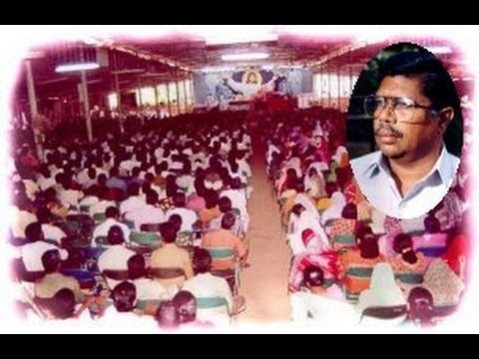
https://www.youtube.com/watch?v=z8pDwI7dXIc
- Muslim Imam discovers and accepts Christ, Divine retreat centre Kerala.
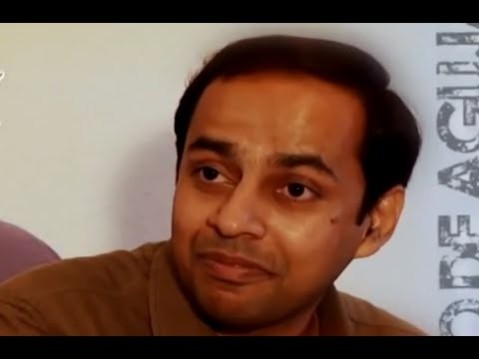
https://www.youtube.com/watch?v=JI24GM28QLs
- Testimony of the great Bollywood actor Johnny Lever

https://www.youtube.com/watch?v=ZX2rlXlRjps
https://www.youtube.com/watch?v=SDcl0SMUxY4
https://www.youtube.com/watch?v=pELzNlYcFoI
- Harvard Jewish Professor sees Virgin Mary and converts
https://www.youtube.com/watch?v=1vnoKr3htss
https://www.youtube.com/watch?v=PEDOtSNECj4
X.2. SOME RELEVANT AND CURRENT MIRACLES EXCLUSIVELY LINKED TO CHRIST AND HIS CLAIMS
Miracles are the essential part of the faith. Without miracles we can never be sure of the truth of faith. Miracles are not only manifestations of the power of God but are also signs of divinity of God. In specific way Christ performed several miracles and were essential part of his ministry. The Gospel writers call them works of wonders to show the power of Jesus Christ being divine and as Lord and also calls it Signs to show that they were indications of him being the Only Lord and Saviour and Redeemer and authenticate his claims. We cannot imagine Christ and Christianity without miracles. We must know one for sure that the Church uses a long process of investigation using science and the best available technologies and methods to investigate cases of miracles. Various process of investigation by use of medical science is laid down and is available.[65] What adds to the credibility of the Church’s process of the investigation is that scientists or Doctors do not challenge the approved miracles proclaimed by the church specially in cases of miracles in canonisation process. Let us not think that the Church is playing some games to protect its authority when we talk of approval of miracles. The below mentioned saints were being persecuted by the church itself. Padre Pio was revoked of public communication for he being allegedly claiming to be stigmatist and having gifts of knowledge (read peoples mind and tell their future or past) and of healing.
A. Eucharistic miracles
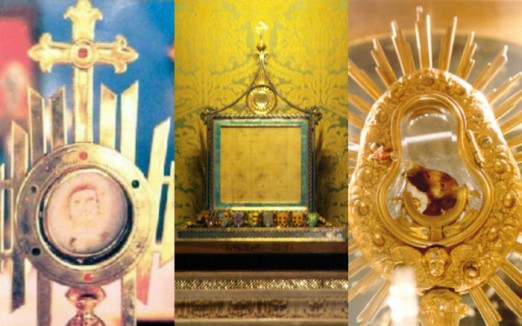
- General summary and history
https://www.youtube.com/watch?v=HIh5hRlbttU
- At Lanciano: https://www.youtube.com/watch?v=whbzLYi7cyc
- At Bolsena https://www.youtube.com/watch?v=c08ZMOeBUOY
- Currently in Naju South Korea to Julia kim, the lady is still alive and you can visit her miracles are still happening and is in process of approval by church.https://www.youtube.com/watch?v=fW0hT6CgkWg
- B.Stigmata: It is different from Hematidrosis which is a sickness in character and appearance and symptoms from the Stigmata. Hematidrosis can be detected as lack of blood clotting tisssues or bleeding problem whereas th esource for stigmata wounds cannot be medically determined. secondly there are instant healings, prophetic messages given and so on when the stigmata happens. The church with the help of doctors carefully study these cases. Significant signs of stigmata is instant healing at the appearing of stigmata and other signs. One needs to significantly know the differences. That is why medical experts handle the cases of miracles no matter whichever in the church.
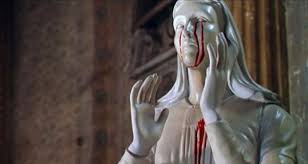
- Doctors have claimed cure for Hematidrosis whereas in case of stigmata there seems no cure.
https://www.healthline.com/health/hematidrosis
https://www.ncbi.nlm.nih.gov/pmc/articles/PMC2810702/
- stigmata is different
https://www.livescience.com/42822-stigmata.html
https://www.britannica.com/topic/stigmata
http://home.wlu.edu/~lubint/touchstone/Stigmata-Hope.htm the process of enquiry.
https://aleteia.org/2015/01/08/what-are-the-stigmata-and-how-do-we-know-if-they-are-authentic/ methods of enquiry.
- Stigmata of Padre Pio
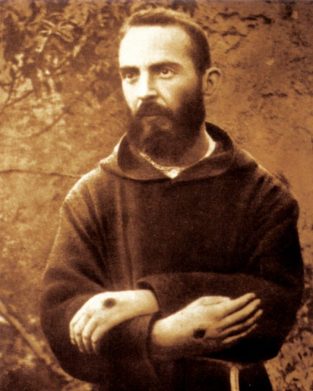
https://www.youtube.com/watch?v=xCxNyzlGiME
https://www.youtube.com/watch?v=Pdq_Ut098YA
The amazing fact is that no doctors who examined him and even those who did not examine him but went through the case have objected and criticised the approval by the Church. And it would be suggested that if anyone wants to challenge the belief in stigmata must actually go through the investigation of the cases the recent and modern one being that of Padre Pio.
A stigmata is not approved or accepted only by the bleeding but also other factors like instant miracles or cures, prophetic words. Padre Pio is said to have the gift to know a persons past and could tell the future not only of persons but of the world. Many got cured through his prayers while he was alive and also after his death.
C. Other miracles and Miraculous events or objects.
- Shroud of Turin.: believed to be the original burial cloth of Jesus Christ and most probably the proof of the Resurrection, in a research and carbon held under the reign of Pope Benedict XVI the Church expressed this as a piece of Art, there have risen more evidences and questions regarding this research. Though we are in 2018. No one has been able to replicate such art. This has called for another research to do carbon dating by taking pieces from the oldest part of the shroud because the shroud had been burnt in some parts in the 14th century and was patched and the pieces taken for dating were from this patched work.
documentary by BBC on new evidence: https://www.youtube.com/watch?v=cpaZcVagTFk
Documentary by Discovery Channel on the new evidence: https://www.youtube.com/watch?v=YWyiZtagxX8
The Jew who is investigating the case and pushes it to be true: https://www.youtube.com/watch?v=4G4sj8hUVaY
- The apparitions of Virgin Mary:
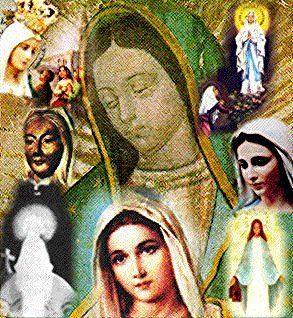
The apparitions of the Blessed Virgin Mary are the most powerful witnessing events. Though there are many reported apparitions the Catholic Church has approved only 16 over the last centuries to be true. The church, like in all cases of miracles, carefully examines the cases with Doctors, psychologists, psychiatrists, scientists and theologians. Every time the blessed virgin appears she gives signs through miracles and lives a sign as proof of the apparition. Here is the list of the apparitions. It is important to know the historical contexts in which this happened.
i. At Guadalupe: the Blessed virgin appeared at Guadalupe to San Diego and the sign she left is the imprint of the day she appeared and cacti cloth which has not corrupted and the celestial inclination is the same as of on the day:
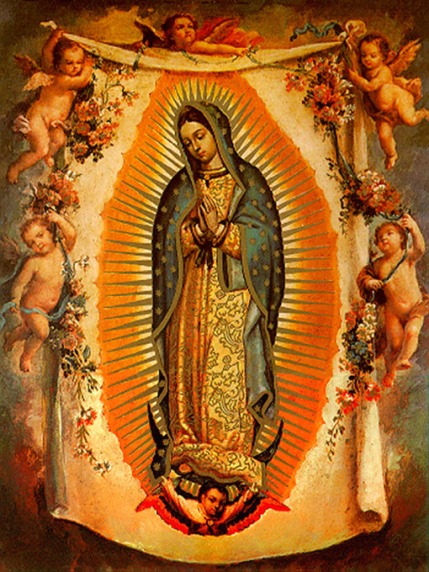
https://www.britannica.com/topic/Our-Lady-of-Guadalupe-patron-saint-of-Mexico
https://www.youtube.com/watch?v=DeWLp9Pu_04
by History channel: https://www.youtube.com/watch?v=6PqQV5uVYYc
Patroness of America: https://www.youtube.com/watch?v=giPENC4demY
ii. At Lourdes: this one of the most famous apparitions of the Blessed Virgin. She appeared to Barnadette in Lourdes France on 11 February 1858. Till date people are experiencing miracles and healings. In the past centuries, 17000 miracles have been reported from which the church has approved only 99 following the regular investigations into the matter. The miraculous spring at Lourdes is the sign left by the Virgin for the apparition. The things the Lady revealed shocked the world.
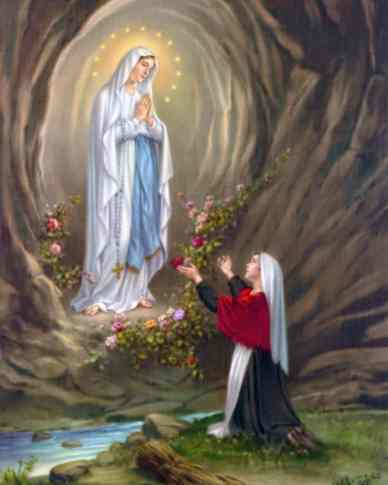
Brief story: https://www.youtube.com/watch?v=7xNUkYL1_Po
By History channel: https://www.youtube.com/watch?v=1fjt6zmy52M
iii. At Fatima:
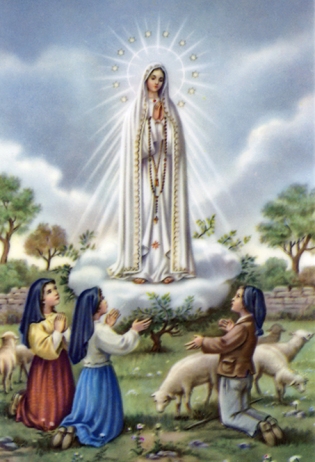
Considered to be the one of the most powerful and significant apparitions is the apparition at Fatima Portugal 1917 to Lucia, Jacinta and Francesco. Significant because it foretold the coming of the Second World War, the Communist Regime of Russia and its errors and its fall only after the consecration of Russia to the Immaculate Heart, the End of the World and the Signs for the end of the World. The apparitions took place in a historical context where Secularist Government took over Portugal and tried to eradicate religion. Apparitions began on 13 May 1917 and continued for the following months on the 13th till 13th October 1917. On the last apparition day thousands were present at the Cova de Irea among them news reporters, skeptics, doctors, Government officials and members of the clergy and lay people who witnessed the miracle of the spinning sun.
By History channel: https://www.youtube.com/watch?v=1fjt6zmy52M
History channel: https://www.youtube.com/watch?v=Yv8XMu5ZRus
https://www.youtube.com/watch?v=Ix2G3reeBuM
https://www.youtube.com/watch?v=RwLzd7JMC90
iv. At Medjugorje: these apparitions have not yet been approved. Though it has been reported from 1980. The church is taking time and critical analyses. The Pope also has a negative opinion. https://www.youtube.com/watch?v=8FTDWY8SIX0
3. Statues or images of Jesus and Mary crying blood or oil
There have occurred many miracles where the statues of Jesus and Mary cries blood or fragrant oil. After investigations it has been unexplained by science as to how it happens. The Church continues to investigate.[66] Though there are rarely few cases of such miracles, the Church puts caution on accepting it before investigation.
- REMARKS
The Apparitions of Mary, the Miracles and healings are the great contributors of the Catholic faith. The Church as said earlier takes lot of time and strict scientific investigation into the cases and only then approves something. Some of them are on the way to approval and has to be tested with every means by the Church. So these events called miracles are strengthening the faith of the people and causing conversions. Many times people experience personal miracles which leads them to conversion.
XI. CONCLUSION
So I hope I have been able to address most of the misconceptions around St. Francis Xavier, the Goa inquisition and the viewpoint of many regarding the missionaries and mission work even till date. Generalising the evil deeds of the Portuguese and applying it or using it for self -victimisation is a very bad tendency. I have also included the issue of religion because this is not a political response or secular response but a Catholic Christian response. As to what a Catholic wants to express when such things go on and are said.
If there are any comments or responses you can drop in an Email to
Mathew Almeida.
Download the pdf THE MYTHS AROUND THE GOAN INQUISITION, CHARGES AGAINST ST. FRANCIS XAVIER, THE CURRENT HINDUTVA ATTACKS, RESPONSE TO ALLEGATIONS BY SHEFALI VAIDYA.
[1] Catechism of the Catholic Church
[2] Gospel according to St. Matthew chapter 28:verses 19-20
[3]Gospel According to John chapter 14 verse 6.
[4] Mathew 28:20
[5] This classification is invented by me based on my research as I was trying to find the true God and his revelation
[6] Gospel according to St. Matthew chapter 28:19-20
[7] Gospel according to St. Mark chapter 16:15-16
[8] First Letter to the Corinthians, 1 Cor chapter 15 and Letter to the Romans 4:25.
[9] Matthew 28:19-20, Mark 16:15, Luke 14:23, 1 Corinthians 9:16
[10] Book of Acts of the Apostles chapter 6:1-15
[11] https://www.jw.org/en/publications/magazines/g201503/pope-alexander-vi-line-of-demarcation/
[12]https://www.osv.com/Magazines/TheCatholicAnswer/Article/TabId/652/ArtMID/13618/ArticleID/20552/What-Is-a-Papal-Bull.aspx
[13] https://www.britannica.com/biography/Gregory-IX
[14] http://www.cathar.info/121295_ad_extirpanda.htm
[15]https://inquisition.library.nd.edu/brief_history.RBSC-INQ:COLLECTION
[16] https://www.biography.com/people/saint-francis-xavier-39911
[17] The above claim is made on following evidences : The metallic crucifix found in a wall of a house at Old Goa by Afonso de Albuquerque, a few days after the conquest of Tiswadi in November 1510. A road was later named after this crucifix — “Rua de Crucifixo”. #The document of a gift (doação) on a metallic plate given to a “pagoda” of Goa Velha by a Hindu king in 1391 which speaks of Trinity and divine incarnation, and later produced in the court of the city of Old Goa in 1532.
Ibn Batuta’s testimony that in 1342 AD, he found Christian settlements on the banks of the River Agashini (river Zuari).
The Saint Thomas Cross with Pahlavi inscription found by Fr J. Cosme Costa on the banks of the river Zuari.
An article in the Examiner (Bombay) on Pre-Portuguese Christianity which speaks of Thomas crosses on the Hill of Colvale (Bardez) which people would hide in olden days, fearing their destruction by the Portuguese. (This article is probably the same as the interview given by H.O. Mascarenhas, mentioned above.)
[18] In Letter Dated 16 May 1546, Silva Rego’s Documentação para a história das Missões do Padroado Português do Oriente: Índia, Lisboa, 1947-1958
[19] https://archive.org/details/LifeLettersOfStFrancisXavierV1/page/n27
[20] https://archive.org/details/LifeLettersOfStFrancisXavierV2/
[21] Silva Rego’s Documentação para a história das Missões do Padroado Português do Oriente: Índia, Lisboa, 1947-1958, vol iii, pg 351. http://purl.pt/26745/4/r-16448-v/r-16448-v_item4/r-16448-v_PDF/r-16448-v_PDF_24-C-R0150/r-16448-v_0000_capa-capa_t24-C-R0150.pdf
[22] https://en.wikipedia.org/wiki/Indonesia
[23] https://archive.org/stream/lifelettersofstf01coleuoft/lifelettersofstf01coleuoft_djvu.txt, pages 157-164.(read more)
[24] https://archive.org/stream/lifelettersofstf01coleuoft/lifelettersofstf01coleuoft_djvu.txt
[25] https://archive.org/stream/lifelettersofstf01coleuoft/lifelettersofstf01coleuoft_djvu.txt
[26] http://gogoa.net/the_body_of_st_francis_xavier.htm
Unlike other mummified bodies preserved around the world the body of St. Francis Xavier is not preserved in such circumstances or conditions. There has been no foul smell nor decay coming out from his body.
[27]https://archive.org/stream/GoaInquisitionAnantKakbaPriolkar/Goa%20Inquisition%20Anant%20Kakba%20Priolkar_djvu.txt , page 28.
[28] Silva Rego, op. eit., vol. VIII, Lisboa 1952, p. 40, (Doc. 14). https://archive.org/stream/GoaInquisitionAnantKakbaPriolkar/Goa%20Inquisition%20Anant%20Kakba%20Priolkar_djvu.txt , page 57.
[29]https://archive.org/stream/GoaInquisitionAnantKakbaPriolkar/Goa%20Inquisition%20Anant%20Kakba%20Priolkar_djvu.txt , page 58
[30] account given by the contemporary traveller
Francois Pyrard also indicates how care was taken to give an
impression that the conversions were free and voluntary : 1578-1623
[Cuoha Rivara, Archivo Portuguex Oriental, Faso. V, pt. Ill, Nova Goa 1800, pp. Hfjfl-T. (Doc. 1022),]
[31]https://archive.org/stream/GoaInquisitionAnantKakbaPriolkar/Goa%20Inquisition%20Anant%20Kakba%20Priolkar_djvu.txt , (page 59)
[32] de Souza, Teotonio R. (1990). Goa Through the Ages: An economic history. Concept Publishing Company. ISBN 978-81-7022-259-0., page 67.
[33] “Religion by Location”. Adherents.com.,
[34]https://archive.org/stream/GoaInquisitionAnantKakbaPriolkar/Goa%20Inquisition%20Anant%20Kakba%20Priolkar_djvu.txt page 57.
[35]https://archive.org/stream/GoaInquisitionAnantKakbaPriolkar/Goa%20Inquisition%20Anant%20Kakba%20Priolkar_djvu.txt page 55
[36] https://archive.org/stream/GoaInquisitionAnantKakbaPriolkar/Goa%20Inquisition%20Anant%20Kakba%20Priolkar_djvu.txt pages110-112
[37] https://archive.org/stream/GoaInquisitionAnantKakbaPriolkar/Goa%20Inquisition%20Anant%20Kakba%20Priolkar_djvu.txt pages 121-122.
[38] https://archive.org/stream/GoaInquisitionAnantKakbaPriolkar/Goa%20Inquisition%20Anant%20Kakba%20Priolkar_djvu.txt pages 129-130.
[39]https://archive.org/stream/GoaInquisitionAnantKakbaPriolkar/Goa%20Inquisition%20Anant%20Kakba%20Priolkar_djvu.txt page 132.
[40] https://scroll.in/article/867440/hindutva-calling-itself-a-version-of-hinduism-is-problematic-historian-romila-thapar
[41] http://indianculturalforum.in/2018/02/21/syndicated-hinduism-romila-thapar/
[42] https://timesofindia.indiatimes.com/city/goa/The-Gadyachi-Jatra-a-tribute-to-the-ghosts-and-holy-spirits/articleshow/4253339.cms ., and also http://goastreets.com/magic-the-occult-and-the-gullible/ also on caste system in Goa and ritual practices also for current events in black magic https://www.indiatoday.in/india/story/goa-manohar-parrikar-graveyard-police-967981-2017-03-27
http://shodhganga.inflibnet.ac.in/bitstream/10603/32126/6/06_chapter%201.pdf
[43] https://www.firstpost.com/india/there-were-no-hindus-in-goa-before-portuguese-landed-church-thinker-953727.html
[44] ** Rigveda – English Translation by Satyaprakash Narayan and Satyakam Vidhyarangan
** Yajurveda – English Translation by Devichand
** Upanishad – English Translation by S. Radhakrishnan
[45] https://www.youtube.com/watch?v=CY-pS6iLFuc , Watch the documentary online.
[46] Read more about this conflict https://www.jstor.org/stable/44145912 also read http://berchmans.tripod.com/latin.html also for brief history https://en.wikipedia.org/wiki/Padroado-Propaganda_Schism
[47] The list of pardons https://w2.vatican.va/content/john-paul-ii/en/homilies/2000/documents/hf_jp-ii_hom_20000312_pardon.html, and also further info on https://www.youtube.com/watch?v=U78fqNrJ7To, also https://en.wikipedia.org/wiki/List_of_apologies_made_by_Pope_John_Paul_II, read also, http://www.jewishwikipedia.info/understand.html
[48] https://minorityrights.org/minorities/adivasis-2/
[49] http://shodhganga.inflibnet.ac.in/bitstream/10603/32126/6/06_chapter%201.pdf and
[50] https://indianexpress.com/article/india/one-dead-in-clashes-near-koregaon-bhima-pune-district-maharashtra-5008031/
[51] https://timesofindia.indiatimes.com/india/koregaon-bhima-violence-was-pre-planned-says-committee/articleshow/65774360.cms
[52] For the latest discovery of Sanskrit script found in Persia ancient Assyria, https://scroll.in/article/737715/fact-check-india-wasnt-the-first-place-sanskrit-was-recorded-it-was-syria?fbclid=IwAR3QcgmWFJCb9oFzH_eCqFoRlFyJSmgOzD0qlRyDgwQTZ39NZawdIZOErGM
For the Persian and Sanskrit relation, http://www.sjsu.edu/faculty/watkins/sanskritavestan.htm
influence of Persian on Hinduism https://parsikhabar.net/culture/ancient-persian-influence-on-hinduism/750/
[53] Documents of the Second Vatican Council, Lumen Gentium , nos.12-17. http://www.vatican.va/archive/hist_councils/ii_vatican_council/documents/vat-ii_const_19641121_lumen-gentium_en.html also watch the summary of this teachings https://www.youtube.com/watch?v=8d5nZ3qdVtU
[54] Documents of the Second Vatican Council, Nostra Aetate, no 2. http://www.vatican.va/archive/hist_councils/ii_vatican_council/documents/vat-ii_decl_19651028_nostra-aetate_en.html ,
Lumen Gentium, no. 16 http://www.vatican.va/archive/hist_councils/ii_vatican_council/documents/vat-ii_const_19641121_lumen-gentium_en.html
[55] https://www.goodreads.com/book/show/651152.Missionaries_in_India
[56] https://www.indiatoday.in/magazine/society-the-arts/books/story/20000117-book-review-of-arun-shourie-harvesting-our-souls-776921-2000-01-17
[57] https://www.8freebooks.net/the-faith-of-our-fathers-by-james/
[59] Documents of Second Vatican Council, Ad Gentes, no.13 http://www.vatican.va/archive/hist_councils/ii_vatican_council/documents/vat-ii_decree_19651207_ad-gentes_en.html
[60] http://www.newadvent.org/cathen/09558b.htm
[61] International theological commission on inculturation, http://www.vatican.va/roman_curia/congregations/cfaith/cti_documents/rc_cti_1988_fede-inculturazione_en.html
[62] for current events in black magic https://www.indiatoday.in/india/story/goa-manohar-parrikar-graveyard-police-967981-2017-03-27 and also
[63] https://indianexpress.com/article/cities/mumbai/black-magic-act-first-conviction-now-course-material-for-police-training/
[64] https://www.youtube.com/watch?v=x7fjyq6cFtg , also The list of pardons https://w2.vatican.va/content/john-paul-ii/en/homilies/2000/documents/hf_jp-ii_hom_20000312_pardon.html.
[65] The process of investigation of miracles by Church https://www.ewtn.com/johnpaul2/cause/process.asp
also read https://www.economist.com/science-and-technology/2000/04/20/miracles-under-the-microscope and also https://nypost.com/2015/09/06/how-the-vatican-investigates-miracles/
[66] https://www.express.co.uk/news/weird/792493/Church-Virgin-Mary-Easter-miracle
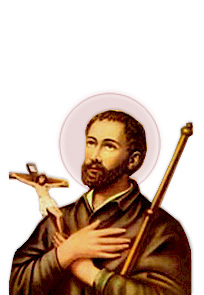

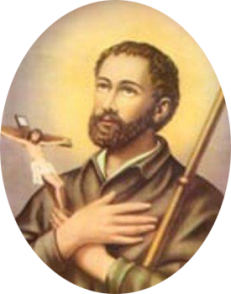
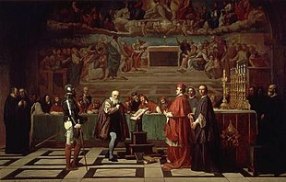
Recent Comments